2023: The Year in Classical - What's Ahead for 2024 - plus a Holiday Gift Guide
Breaking News concerning the popular Deutsche Grammophon Original Source Series caps a big year for fans of classical music
’Tis the season - and the perfect opportunity to look back over the year in classical and film music releases, and make some gift recommendations for the classical and film music audiophile (including some ideas you may have missed).
To say it’s been a banner year for the classical music-loving audiophile is an understatement. The Original Source Series of vinyl reissues from Deutsche Grammophon has charted new ground in every way possible, and points the way forward for other classical companies to do proper audiophile vinyl editions of their back-catalogue (no more sub-par pressings from unspecified digital sources, please). It has been a triumph for the engineering team of Rainer Maillard and Sidney Meyer at Emil Berliner Studios (long the standard-bearer for audiophile vinyl and SACD reissues). It has been a marketing dream for DG itself, and a huge commercial success. At this point all titles from the first three batches are sold out, but titles from batch #4 are still available. Currently one more batch of titles is coming out in the new year.
However, a couple of issues related to these reissues have been percolating in the audiophile community which I wanted to address here.
FIRST, THE GOOD NEWS! (and a Tracking Angle Exclusive!):
For this year-end summary I had already written something about the need for represses of this series, and repeated my plea for DG to do something about this, when I and MF got an email from Johannes Gleim at DG. (Johannes is the Director of the Heritage division at DG). He told us the wonderful news that DG will be repressing the first batch of the series (reviewed here). These records will be identical to the original releases, except they will not be numbered copies.
As far as these represses of batch #1 are concerned, I quote from Herr Gleim’s email:
“The official release date is 16th February for all retailers, but it will have a pre-release in our D2C-Shop on 21st December here https://store.deutschegrammophon.com/p30-i3200, and the pre-order for that will start on Friday 1st December when the product will be made available again.”
I am so glad that DG listened to the fans of this series!
Less happily, there remains a second issue of price. It has not gone unnoticed that with the latest batch of releases, the retail price has crept up. In my original review of the first batch I mentioned that I thought the OSS titles were priced fairly in comparison to other AAA reissues, like the Tone Poet Jazz series (which was a model for the OSS releases). Now while I acknowledge that this is a time of volatile manufacturing costs, this price increase looks a little unseemly. I am not here to second guess DG’s economic strategy, but this is generating a little negativity amongst the fans, who are otherwise fully onboard with what DG is doing.
I doubt very much anything will change with regard to pricing, but I hope DG holds back on any further increases.
So if you haven’t dived into these OSS titles yet, you now have the opportunity to do so with the represses, batch #4, and the next batch currently available for pre-order (primarily on the DG site; other retailers are not offering them yet, but they will be).
As to the future of the series, without giving anything away, I will just say I have reason to be optimistic. I also have reason to say: You ain’t heard nothing yet!
Beyond that, my lips are sealed.
(And not surprisingly MF has listed the OSS releases on his list of Xmas gift recommendations).
If, in the meantime, you are having withdrawal symptoms from not having any new OSS releases to listen to, there are still some fine vinyl and SACD reissues produced by members of the Emil Berliner Studios out there, and they are amongst my Xmas gift suggestions later in this article.
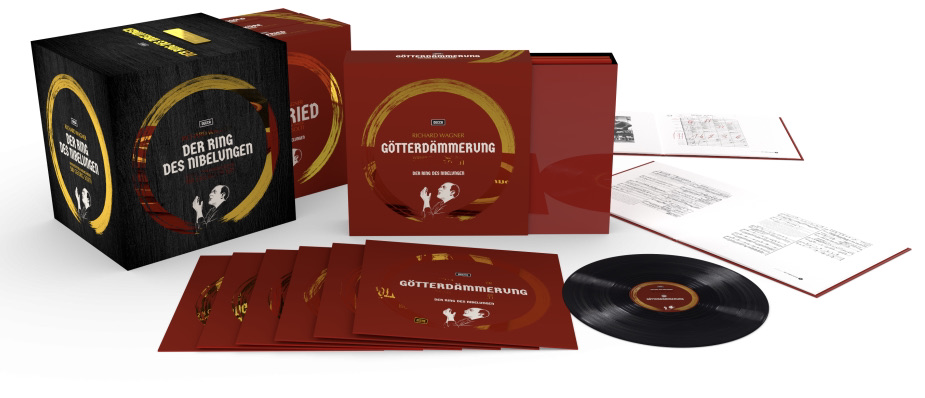
DECCA CLASSICS REMASTERED FOR VINYL AND CD/SACD
The other big news in new audiophile reissues in 2023 has been the reappearance of two iconic titles from the Decca back catalogue: of Solti’s ground-breaking Wagner Ring cycle from the late 1950s/early 1960s with the Vienna Philharmonic, and of Benjamin Britten’s classic recording of his own War Requiem. The Britten has only just been released, and a review of both the vinyl and CD/SACD version is in the works.
I have discussed the newly remastered Solti Ring extensively on this site. While I was somewhat disappointed by the vinyl version (a half-speed cut by Miles Showell from the same digital master used to generate the excellent - and, I think, superior - dual-layer SACD), this may still be a good option for newcomers to this recording who must have vinyl and are willing to sacrifice the last smidgen of bloom and detail for dead quiet pressings. But if you are willing to put up with some surface noise, I still think original Decca wide-band pressings are the way to go, and for the first two operas - Das Rheingold and Die Walküre - you can go to the next level with the King Super Analogue Disc versions - at a price!
For those SACD purchasers who must have the original cover art-work, there is a gorgeous limited edition of these SACDs out of Japan, each opera sold separately. More expensive though.
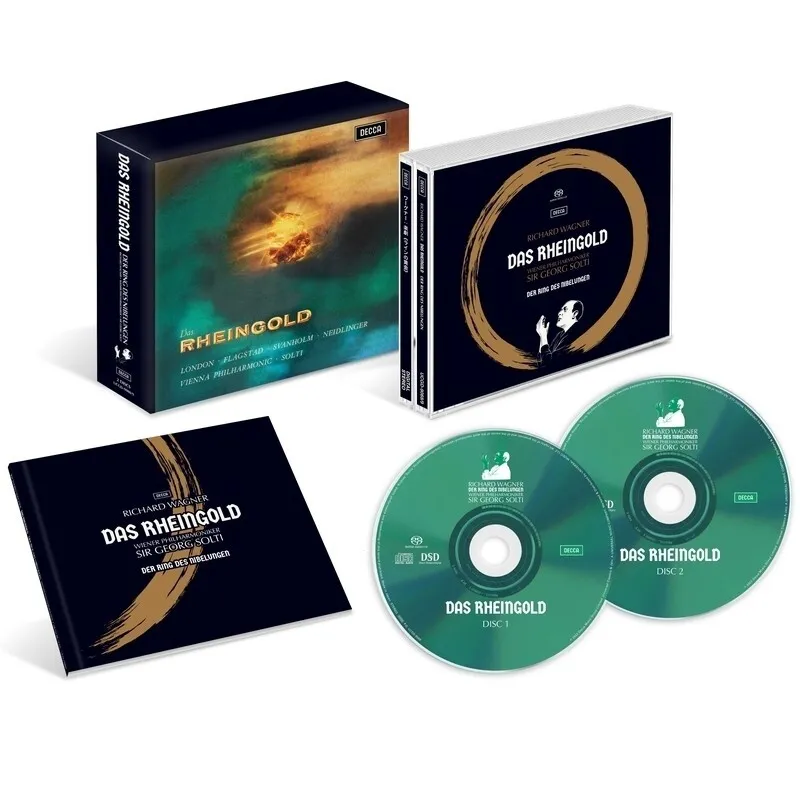
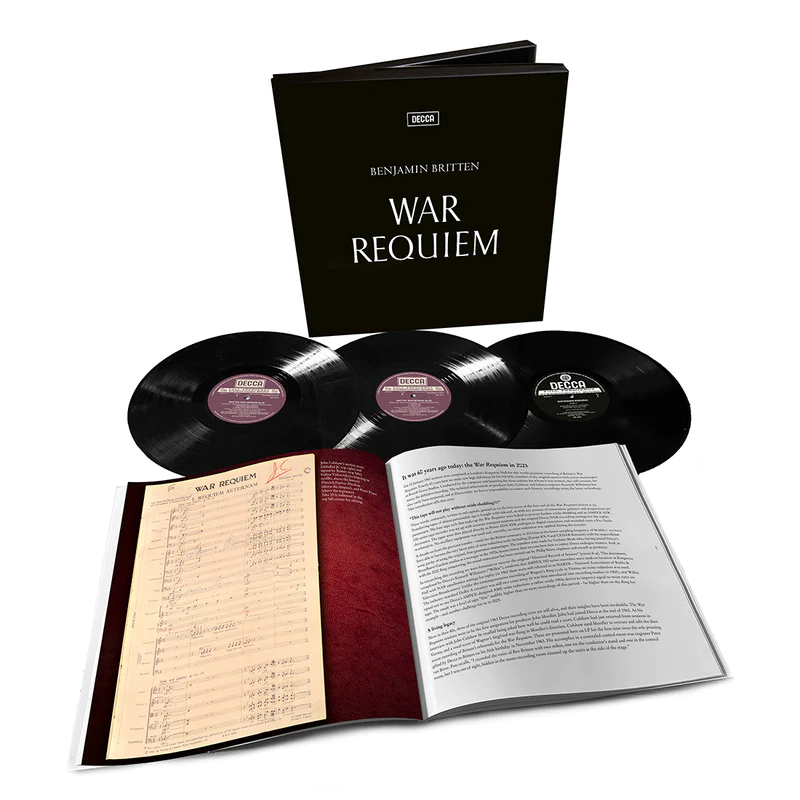
The Britten War Requiem has, like the Ring, again been remastered from digital. Both the CD/SACD and vinyl versions include a substantial extra - a recording of rehearsals for the recording. Producer John Culshaw secretly taped Britten directing his huge forces for a unique pressing which was presented to the composer as a birthday present.
The work itself was that rare thing - an instantly acknowledged masterpiece - and like the Solti/Culshaw Ring, it is considered to be one of THE classic recordings in the catalogue. It is also a sonic blockbuster, so I am very much looking forward to hearing the new versions - and I will pass on my findings asap.
Britten, along with his compatriot Michael Tippett, was a fervent pacifist and conscientious objector (Tippett actually spent time in jail for refusing to join up). The War Requiem is, quite simply, the greatest anti-war statement in music and, alas, is once again very timely. My review will naturally go into the history of this work and recording, which in the minds of many (including myself), is still unsurpassed and fully worthy of its status as a classic.
STREAMING CLASSICAL IN 2023
Two big developments happened in the world of classical streaming last year.
The first was that Presto Music - far and away the best online retailer for classical music, based in the UK - launched its own dedicated streaming service. With a deep catalogue, this must be considered a primary recommendation for the classical music lover wanting to dip their toes into this technology. I myself will stick with Tidal (not least because of my already existing, huge playlist), which I’ve used very happily for years, but the Presto service is a viable alternative.
The other huge news was the arrival of the Hyperion catalogue on streaming services (titles are slowly being phased in). This was the result of the label being acquired by UMG. The Hyperion label has long been considered one of the finest and most adventurous of all the independent classical labels, with a stunning back catalogue, and its absence from streaming services was definitely frustrating for many. But now you can easily sample its many fine recordings, and a future article will be delving into its back catalogue (and talking about some its early vinyl releases).
There’s no doubt that streaming is giving artists - especially classical ones - short-shrift financially, but like many I find it an invaluable tool for sampling a recording before buying physical media. We classical music lovers are reluctant to give up our records, SACDs and, yes, even CDs! But until someone comes up with an alternative, streaming is here to stay, and it is pretty darn amazing how much incredible music you can access in decent sound at the click of a mouse!
GIFT IDEAS FOR THE HOLIDAYS
To paraphrase the Ancient Mariner:
Vinyl, Vinyl, Everywhere……
There are some pretty amazing vinyl titles out there right now. I’ve mentioned the DG OSS releases above, but if you want to sample some more of the superb mastering and cutting from Emil Berliner Studios, there are some earlier reissues still available.
As always, start your hunt for all the titles I am mentioning at Elusive Disc and Acoustic Sounds. For convenience, I have only picked titles that are in print at one or both of these retailers (although you can undoubtedly track them down elsewhere too).
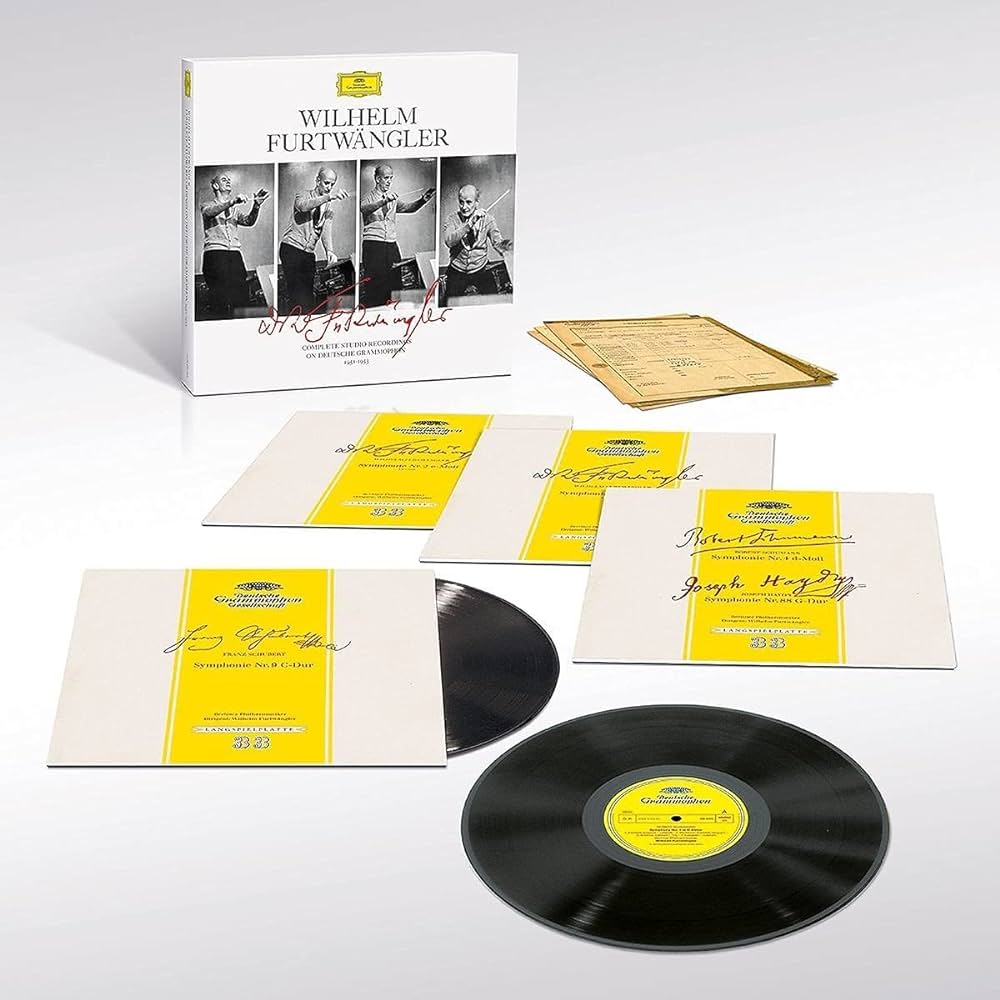 A great place to start is this superb reissue of classic mono recordings from the Deutsche Grammophon catalogue by legendary conductor Wilhem Furtwängler. I didn’t even know this vinyl reissue existed until I was alerted to it by fellow TA scribe Michael Johnson. Cut by Sidney C. Meyer from the unprocessed 192kHz/24b transfer from the original master tape in the DG archives, the sonics on this reissue are superb - no allowances need be made for the mono sound. Yes, two of the LPs are taken up by Furtwängler’s own Second Symphony, which you only need to listen to once, but the other two LPs contain iconic recordings of symphonies by Haydn, Schumann and Schubert.
A great place to start is this superb reissue of classic mono recordings from the Deutsche Grammophon catalogue by legendary conductor Wilhem Furtwängler. I didn’t even know this vinyl reissue existed until I was alerted to it by fellow TA scribe Michael Johnson. Cut by Sidney C. Meyer from the unprocessed 192kHz/24b transfer from the original master tape in the DG archives, the sonics on this reissue are superb - no allowances need be made for the mono sound. Yes, two of the LPs are taken up by Furtwängler’s own Second Symphony, which you only need to listen to once, but the other two LPs contain iconic recordings of symphonies by Haydn, Schumann and Schubert.
Back in the days of LP these recordings were reissued in various celebratory box sets, and again later on CD. So they turn up in various combinations with other of Furtwängler's DG recordings. I've not heard earlier vinyl iterations, but I do have CD versions. These new cuts smoke the CDs.
Before the OSS reissues, you could find the work of Emil Berliner Studios on a number of excellent vinyl reissues from the DG catalogue, with some issued on the Analogphonic imprint. Some are definitely cut AAA, some are cut from digital (half-speed) - but the sound is just as excellent on the latter as on the former. All sound better than their original vinyl (or later CD) incarnations. Most of these are long OOP, but a few still linger on at their original price points.
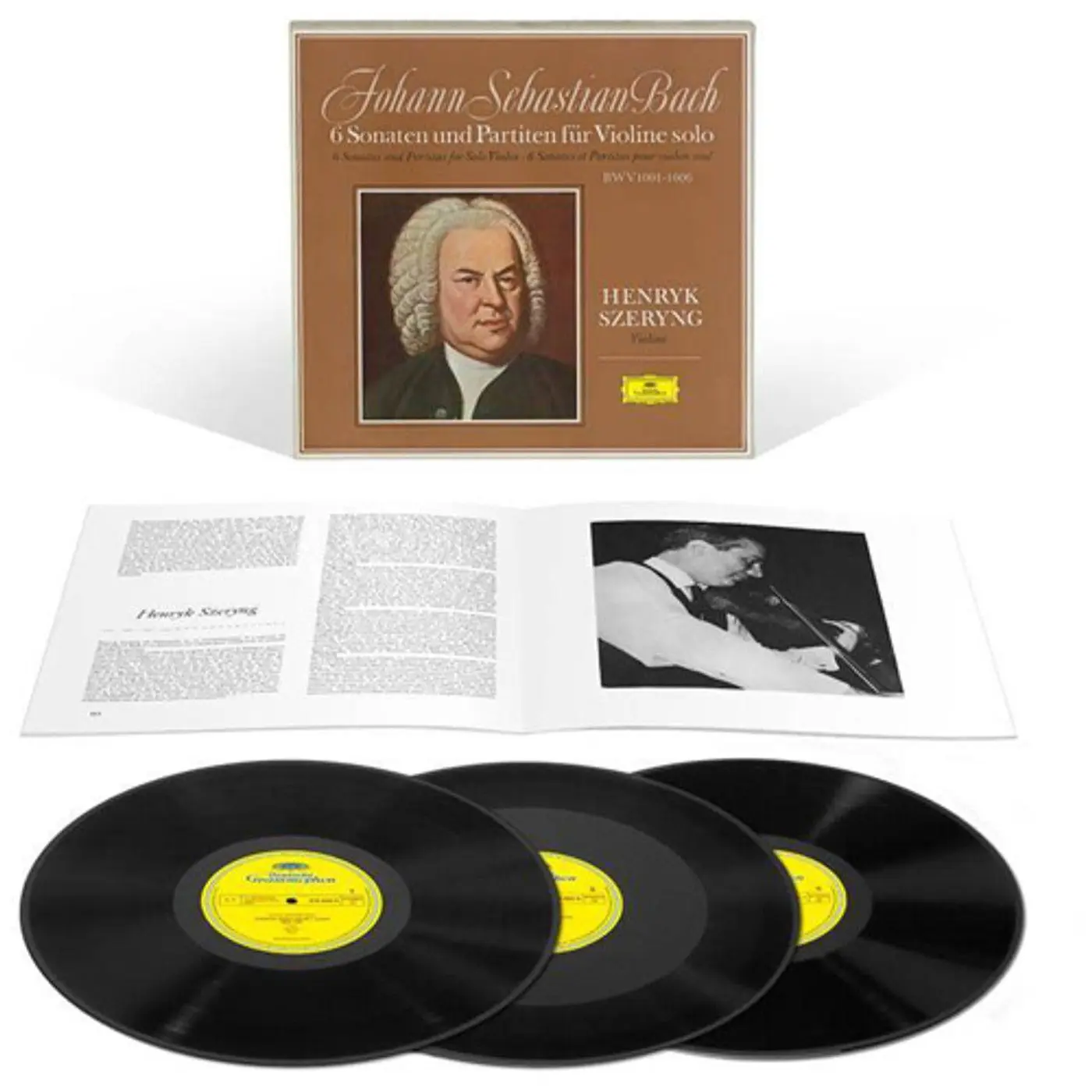
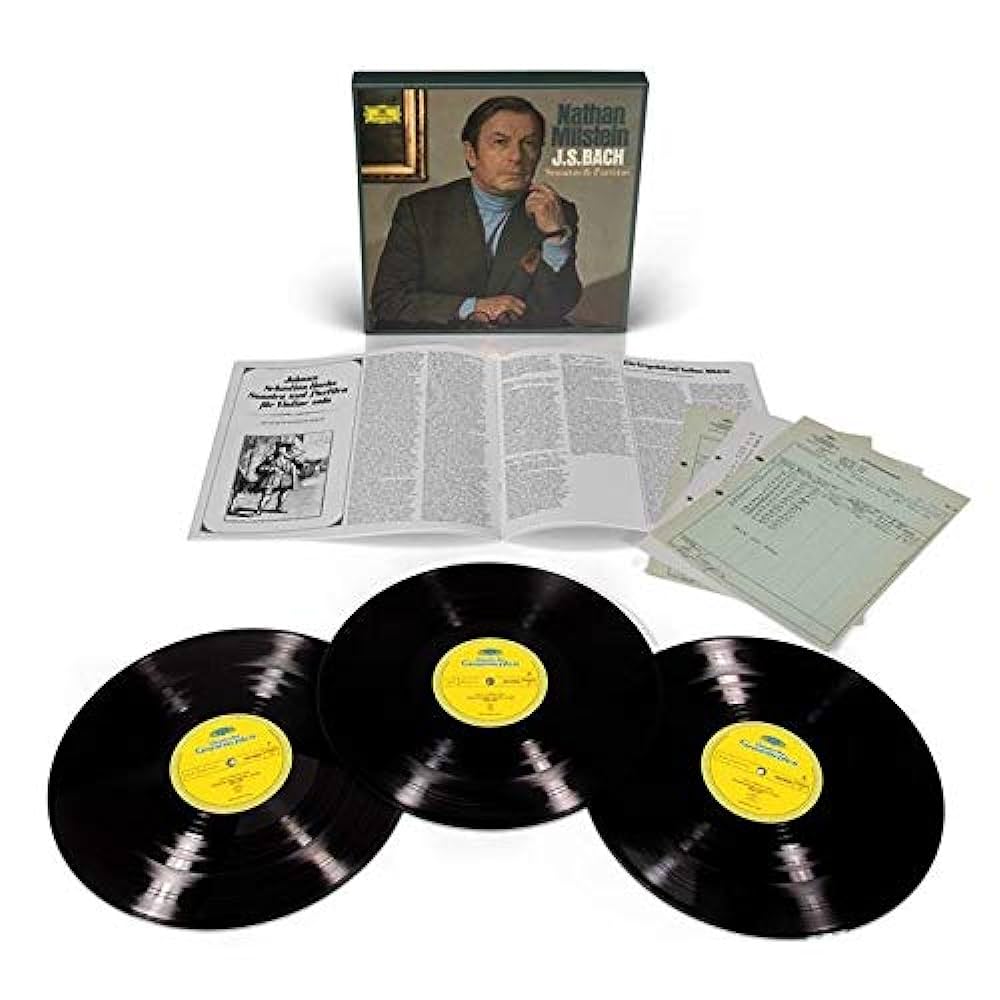 These are two iconic sets of the Bach Sonatas and Partitas for solo violin from DG, one performed by Henryk Szeryng, one by Nathan Milstein. These are two different approaches to this extraordinary music, with Milstein maybe the somewhat more dramatic and emphatic. I love both, and you will too, especially on these dead quiet pressings with vivid sound.
These are two iconic sets of the Bach Sonatas and Partitas for solo violin from DG, one performed by Henryk Szeryng, one by Nathan Milstein. These are two different approaches to this extraordinary music, with Milstein maybe the somewhat more dramatic and emphatic. I love both, and you will too, especially on these dead quiet pressings with vivid sound.
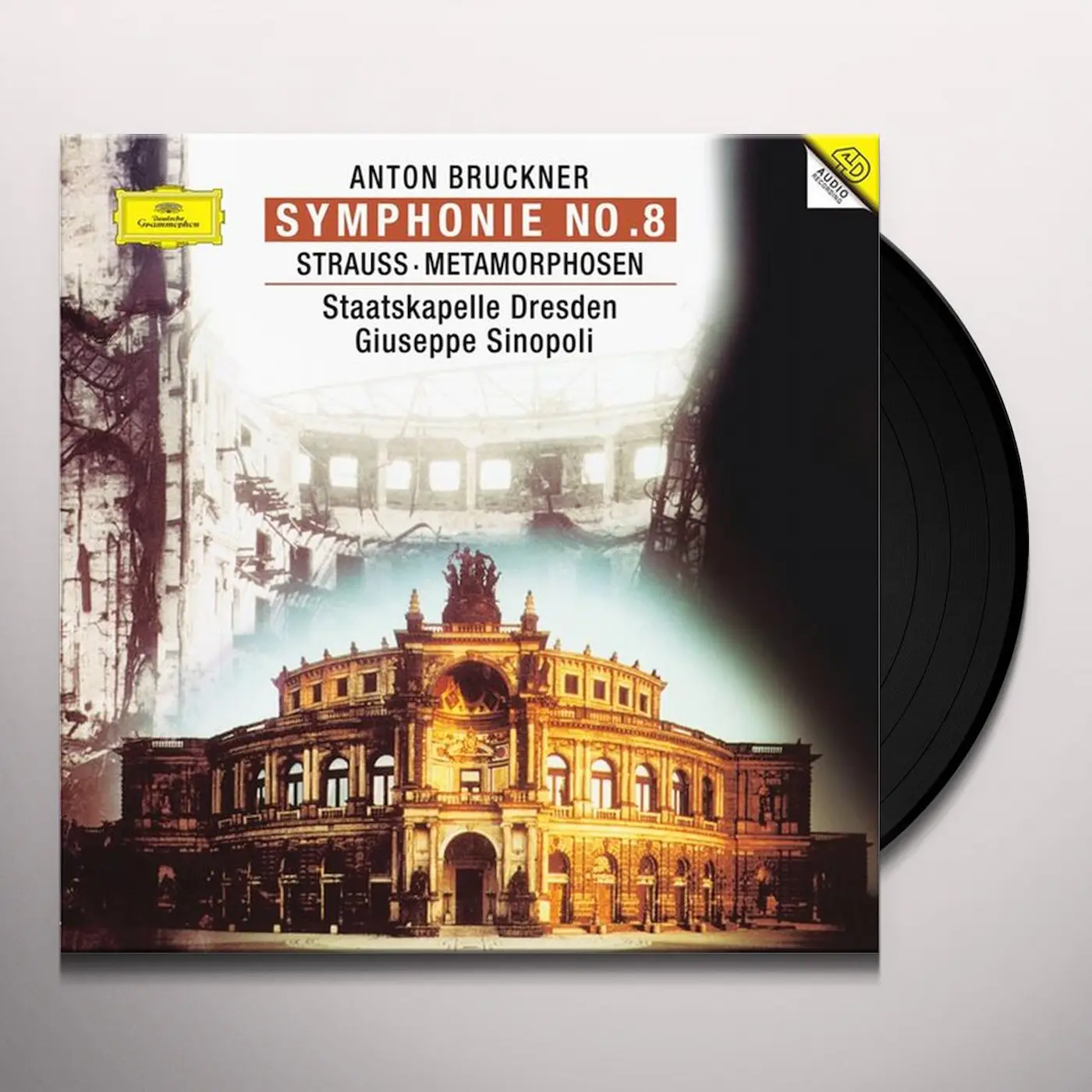
Another release that I was surprised to see still around is the vinyl reissue of Giuseppe Sinopoli’s account of Bruckner’s massive 8th Symphony, coupled with R.Strauss’s Metamorphosen for strings. Sinopoli can sometimes be a little bit of a wayward conductor, but not so here. These are massive, gorgeous performances, made all the more attractive by being performed by the Dresden Staatskapelle. This is one of my favorite orchestras. It has a unique sonority, and one of my most memorable live concerts was hearing the orchestra perform Bruckner live with Bernard Haitink at the BBC Proms. The Dresden Staatskapelle is a perfect match to this music (the orchestra recorded a complete cycle for EMI back in the day with that other great Brucknerian, Eugen Jochum).
For many years Speaker’s Corner has issued terrific AAA mastered and cut reissues of mainly the Decca catalogue, but also some key titles from Philips, DG, and Columbia/CBS. Alas, in recent years the amount of these in print and in stock has dwindled dramatically. However, I went on a scavenger hunt and I found several excellent titles still readily available (I’m not including used records available in the Vinyl Vault section of Acoustic Sounds).
First up, some personal favorites from the massive Ernest Ansermet and Suisse Romande Orchestra catalogues. This whole discography is touched by magic, both musically and sonically, and I am currently working on a survey of these records which you will be able to read on this site in the not-too-distant future.
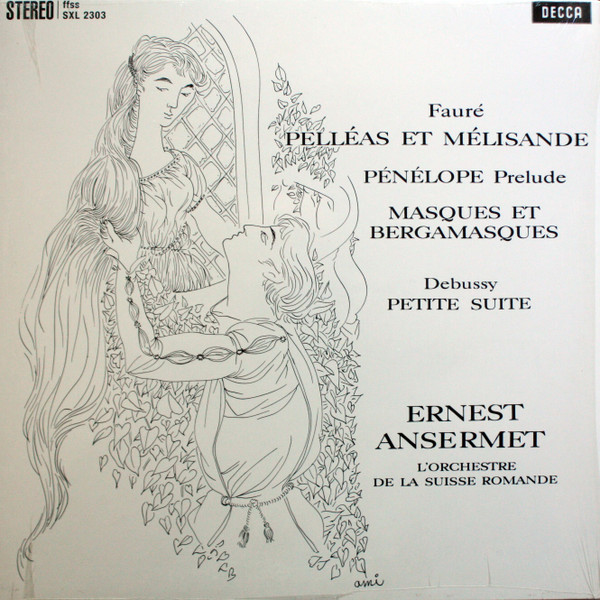 Unlike Ansermet’s Debussy and Ravel, this is a less well-known record of unfamiliar music by Gabriel Fauré, but no less attractive. I have an original wide-band Decca of this, and it is glorious. Based on my comparisons of other OGs and SC reissues, there's no reason to suppose this Speaker's Corner is significantly less impressive than an original. This is gentle music, tinged with melancholy. The Sicilienne movement features one of the most memorable tunes which many of you will recognize without knowing where it was from.
Unlike Ansermet’s Debussy and Ravel, this is a less well-known record of unfamiliar music by Gabriel Fauré, but no less attractive. I have an original wide-band Decca of this, and it is glorious. Based on my comparisons of other OGs and SC reissues, there's no reason to suppose this Speaker's Corner is significantly less impressive than an original. This is gentle music, tinged with melancholy. The Sicilienne movement features one of the most memorable tunes which many of you will recognize without knowing where it was from.
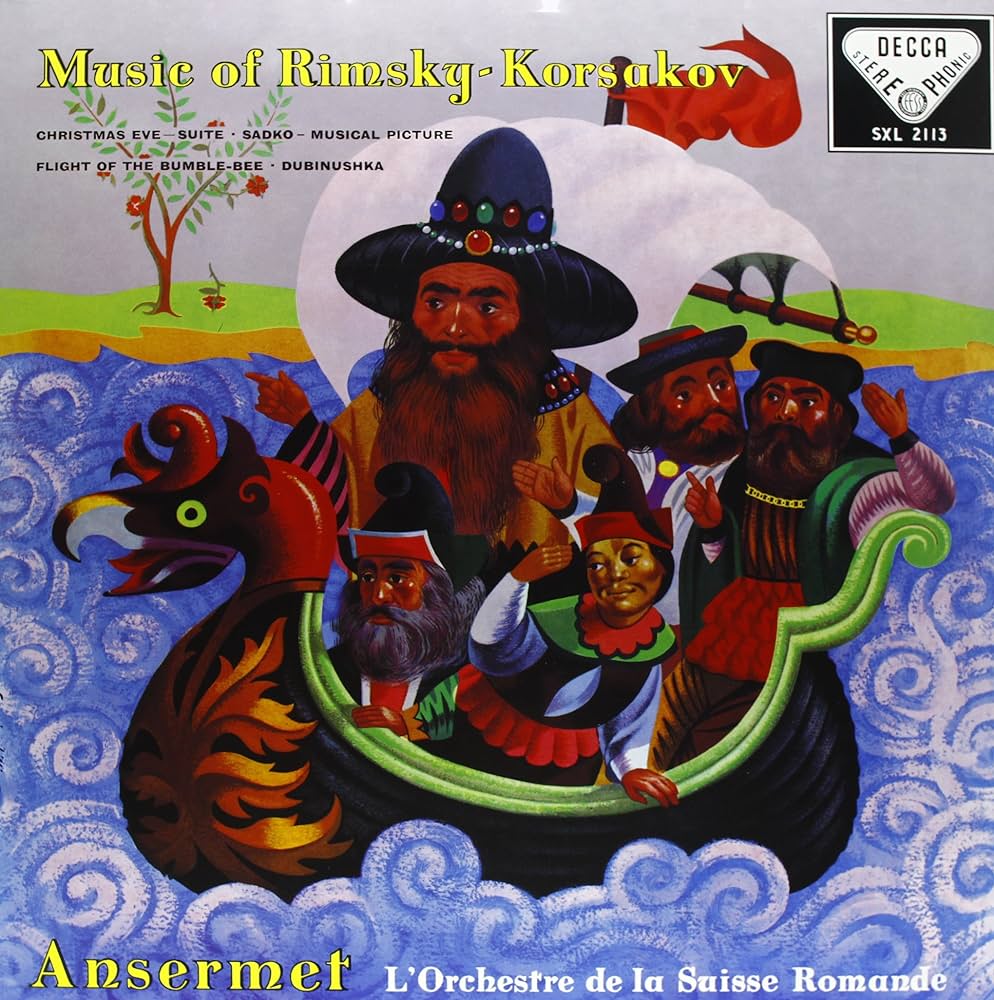
Another favorite Ansermet record is of assorted works by Rimsky-Korsakov, less well-known than Scheherazade, but no less compelling. This has long been considered a jewel in Ansermet’s catalogue (as are all his Russian music albums, frankly). Back when this was recorded in 1959 in typically luminous Decca sound, this was rare repertoire on record and in the concert hall - and it still is. The one work here which will be familiar to everyone is The Flight of the Bumblebee, but the rest is typically full of great tunes and fabulous orchestration. It includes the Christmas Eve Suite, drawn from the composer’s opera of the same name, based on a short story by Gogol. The music is so redolent of the season that you’ll wonder why we don’t hear it more often this time of year.
Both these records are available at Elusive Disc.
The site also still has some of the incredible sounding reissues of classic early Decca/London and Mercury Living Presence on the Original Recordings Group. Cut by Bernie Grundman at 45rpm, the titles include music by Britten, Ansermet’s iconic versions of Borodin symphonies, Peter Maag’s definitive version of Mendelssohn’s “Scotch” Symphony, Dorati’s fierce Prokofiev, Zubin Mehta’s classic Holst “Planets” - and more. If you don’t mind getting up to flip the sides, these are all amongst the very best sounding versions of these records.
THE bargain to be had right now on these ORG titles is the superb Decca/London Phase 4 Stereo album, The Mysterious Film World of Bernard Herrmann.
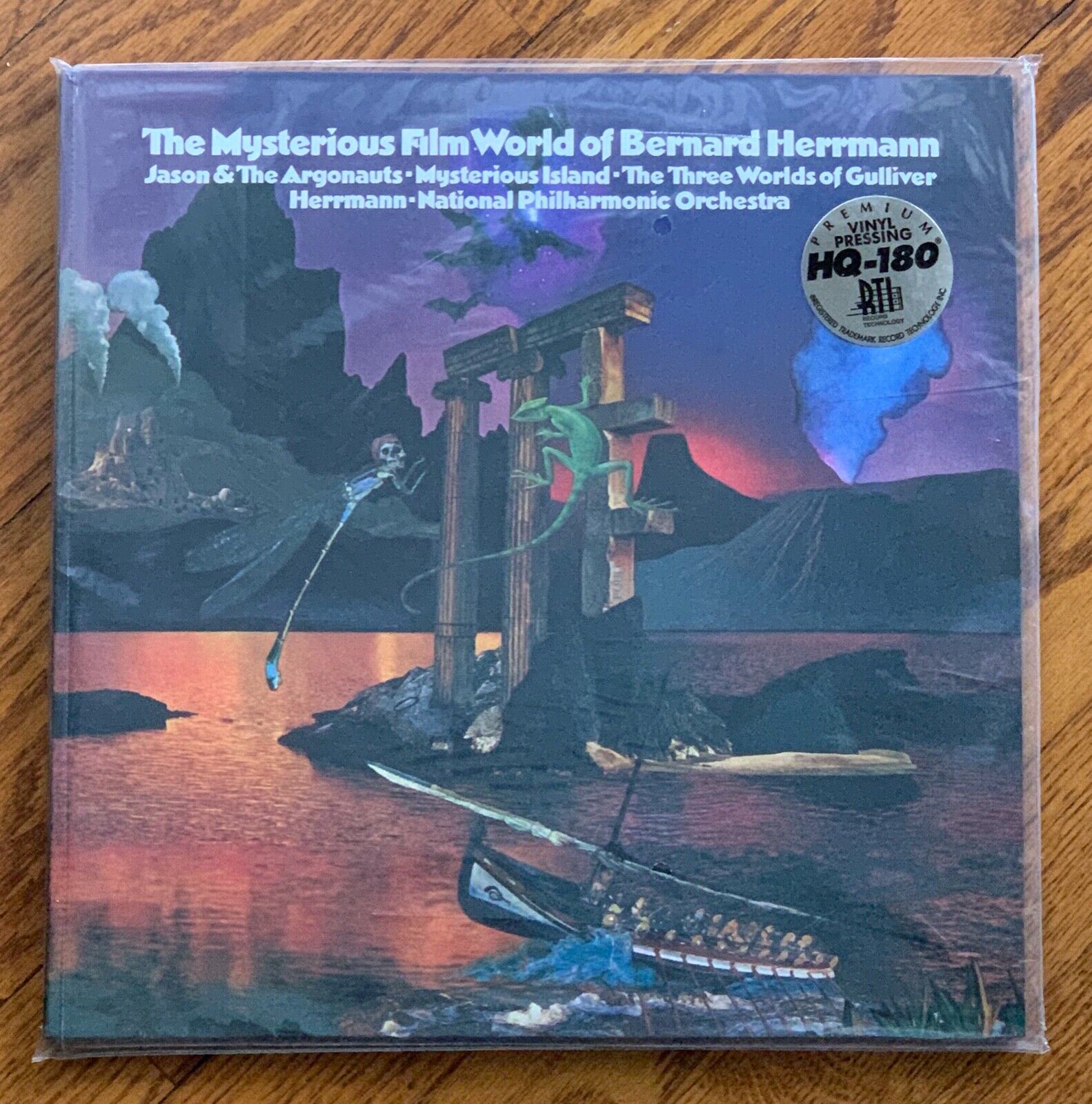
I reviewed this version earlier this year, and it is stupendous! Mastered by Bernie Grundman to two 45rpm platters, this will really put your system through its paces. Elusive Disc is currently offering it at the knockdown price of $20. I have no idea how long this price will last, so do not hesitate!
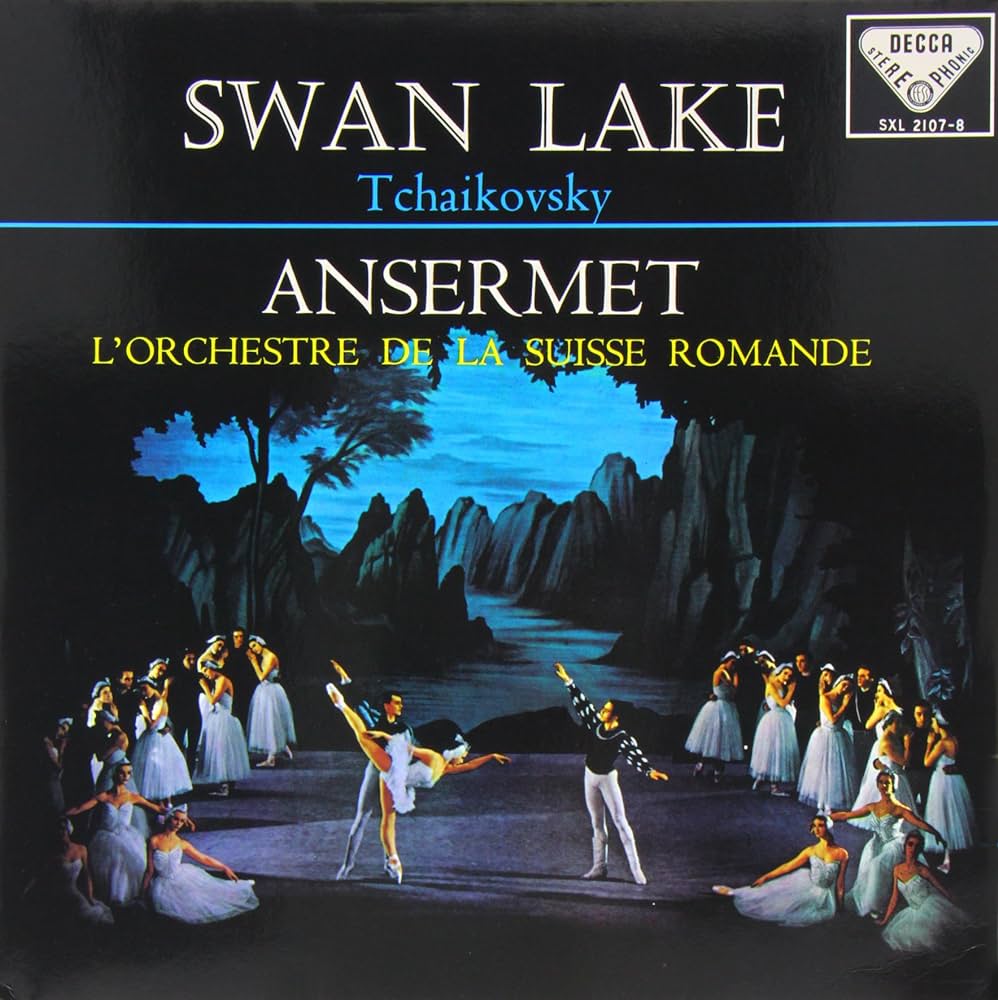 All of Ansermet’s records of Tchaikovsky’s three ballets are mandatory purchases. Alas, the Nutcracker is out of stock, but Acoustic Sounds does have Swan Lake. Ansermet was a seasoned ballet conductor, and it shows. Certainly there are other great recordings of this repertoire, but this is still one of the benchmark versions, with that vivid Decca sound from the Victoria Hall in Geneva adding its characteristic bloom.
All of Ansermet’s records of Tchaikovsky’s three ballets are mandatory purchases. Alas, the Nutcracker is out of stock, but Acoustic Sounds does have Swan Lake. Ansermet was a seasoned ballet conductor, and it shows. Certainly there are other great recordings of this repertoire, but this is still one of the benchmark versions, with that vivid Decca sound from the Victoria Hall in Geneva adding its characteristic bloom.
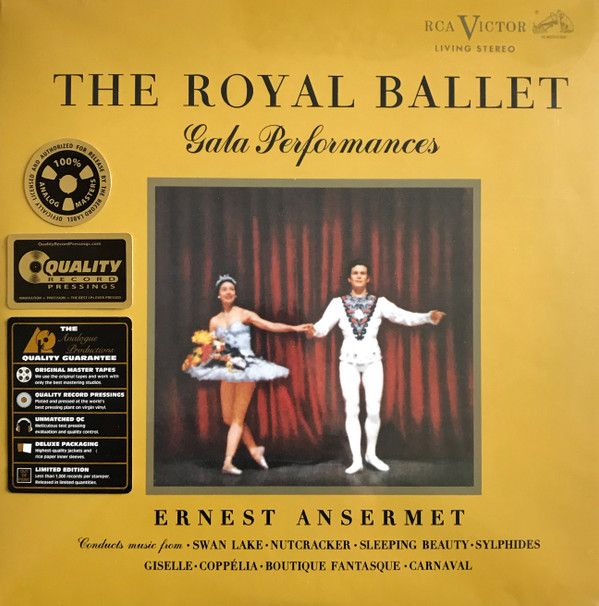 Speaking of Ansermet and ballet, if you do not own the superb Analogue Productions reissue of The Royal Ballet Gala on RCA Living Stereo, now is the perfect time to pick it up (and it’s got some choice music from The Nutcracker). This remains maybe the best sounding classical recording ever made, and the performances by Ansermet of extracts from a range of the great ballet scores, conducting the Orchestra of the Royal Opera House, Covent Garden, are the non-pareil. The regular 2LP, 33rpm version will suffice, but if you want to get the full audiophile glory of engineer Kenneth Wilkinson’s Kingsway Hall masterpiece, then plump for the 45rpm edition. There is also an SACD. This is the perfect present for someone who wants to dip their toes into the waters of classical music.
Speaking of Ansermet and ballet, if you do not own the superb Analogue Productions reissue of The Royal Ballet Gala on RCA Living Stereo, now is the perfect time to pick it up (and it’s got some choice music from The Nutcracker). This remains maybe the best sounding classical recording ever made, and the performances by Ansermet of extracts from a range of the great ballet scores, conducting the Orchestra of the Royal Opera House, Covent Garden, are the non-pareil. The regular 2LP, 33rpm version will suffice, but if you want to get the full audiophile glory of engineer Kenneth Wilkinson’s Kingsway Hall masterpiece, then plump for the 45rpm edition. There is also an SACD. This is the perfect present for someone who wants to dip their toes into the waters of classical music.
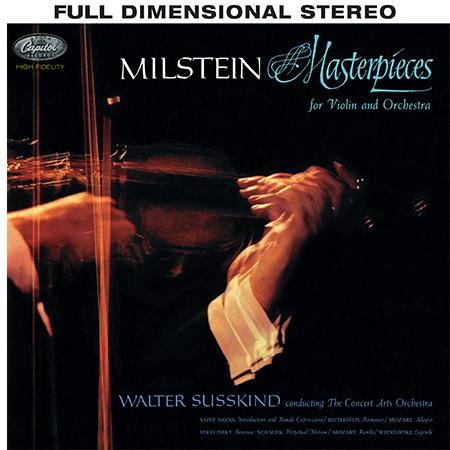 Sticking with Analogue Productions, another record which vies for the title of best sounding classical recording ever, is Masterpieces for Violin and Orchestra, featuring Nathan Milstein. Milstein is my favorite violinist, and my original Columbia SAX pressings of him playing Mozart violin concertos and the Beethoven Violin Concerto are amongst my most prized records.
Sticking with Analogue Productions, another record which vies for the title of best sounding classical recording ever, is Masterpieces for Violin and Orchestra, featuring Nathan Milstein. Milstein is my favorite violinist, and my original Columbia SAX pressings of him playing Mozart violin concertos and the Beethoven Violin Concerto are amongst my most prized records.
Masterpieces is exquisite, a recital of shorter, very appealing works. Milstein is right there, standing in front of you, with the orchestra just behind him. Another record that is as perfect for the classical novice as it is for the seasoned collector.
The Analogue Productions’ extensive catalogue of beautifully AAA remastered and cut titles from the RCA Living Stereo catalogue have all been steadily repressed in the last year, and are pretty much all in stock. I certainly do not need to repeat the plaudits for these records, but I thought I would mention a couple of favorites that might be slightly less well-known.
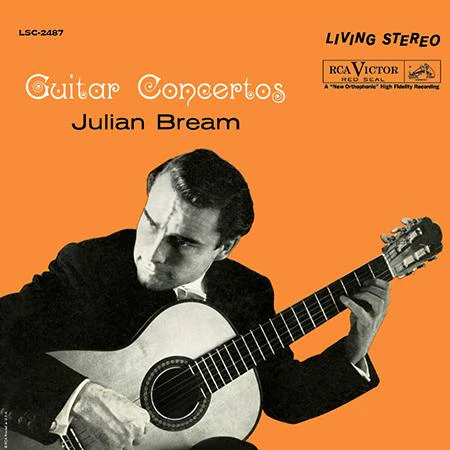 First the record by Julian Bream of guitar concertos by Baroque composer Mauro Giuliani, and 20th century British composer Malcolm Arnold. In recent years we have been getting more and more of Arnold’s fine music issued by various British labels, but when this record came out in 1961 this must have been a pretty early excursion for his music on record, let alone on a major record label. This is very accessible music, and makes for a delightful contrast with the Giuliani. I heard Julian Bream play live in my teens, and he remains the supreme guitarist in my mind. Alas, Bream was a lifelong RCA artist, so most of his recordings are only out there on sub-standard vinyl or CD, which makes me especially grateful to Chad for reissuing this less obvious title from the RCA LS catalogue.
First the record by Julian Bream of guitar concertos by Baroque composer Mauro Giuliani, and 20th century British composer Malcolm Arnold. In recent years we have been getting more and more of Arnold’s fine music issued by various British labels, but when this record came out in 1961 this must have been a pretty early excursion for his music on record, let alone on a major record label. This is very accessible music, and makes for a delightful contrast with the Giuliani. I heard Julian Bream play live in my teens, and he remains the supreme guitarist in my mind. Alas, Bream was a lifelong RCA artist, so most of his recordings are only out there on sub-standard vinyl or CD, which makes me especially grateful to Chad for reissuing this less obvious title from the RCA LS catalogue.
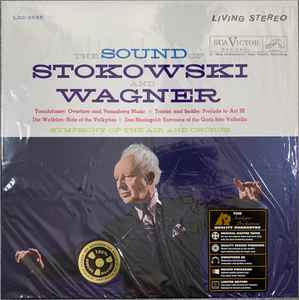
Another RCA LS album I was unfamiliar with until AP reissued it is the Stokowski Wagner “bleeding chunks” record. There is certainly no shortage of such records in the catalogue, not least from Stokowski himself. Klemperer’s trio of EMI Columbia albums from the early 1960s are essential. I have a number of the Stokowski Wagner programs already, but dropping the needle on this record was akin to entering my own personal musical Valhalla (and yes, the record includes the Entrance of the Gods into that same lofty establishment from Das Rheingold). Simply put, this is Wagner on steroids, in Technicolor, and irresistible.
There are, of course, a number of RCA LS titles which Analogue Productions has not reissued, but which Classic Records did back in the day. One of these I wish Chad would turn his attention to is Clair de Lune, a collection of shorter orchestral pieces, including Debussy’s ever-popular musical portrait of a moonlit night. Again, this rivals the Royal Ballet Gala in the sonic glory stakes. I treasure my Classic Records copy (a regular 33 cut; the 45rpm is pictured below) but remain hopeful that, maybe, one day this will reappear on the AP imprint.
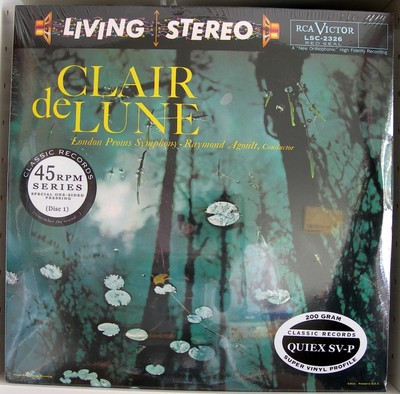
Testament/EMI Reissues
This is a reissue label that sometimes gets overlooked, maybe in part because its catalogue can be notoriously unreliable in terms of being in stock. But right now there’s a nice selection of titles in stock at Acoustic Sounds, and there are several I absolutely have to bring to your attention.
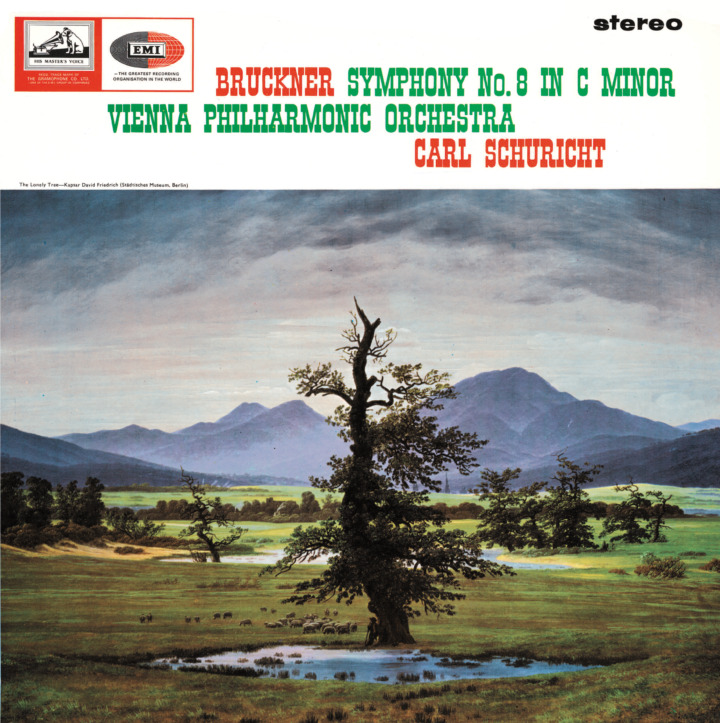 Top of the list are two benchmark recordings of Bruckner symphonies by Carl Schuricht with one of the quintessential Bruckner orchestras, the Vienna Philharmonic, recorded in archetypal EMI sound of the late 1950s/early 60s. Schuricht presents this music unadorned by radical conductor interventions which can really spoil the flow of Bruckner’s gothic arch lines. The cover of the 9th is a perfect visual expression of his music, inhabiting as it does vast, cavernous cathedral spaces.
Top of the list are two benchmark recordings of Bruckner symphonies by Carl Schuricht with one of the quintessential Bruckner orchestras, the Vienna Philharmonic, recorded in archetypal EMI sound of the late 1950s/early 60s. Schuricht presents this music unadorned by radical conductor interventions which can really spoil the flow of Bruckner’s gothic arch lines. The cover of the 9th is a perfect visual expression of his music, inhabiting as it does vast, cavernous cathedral spaces.
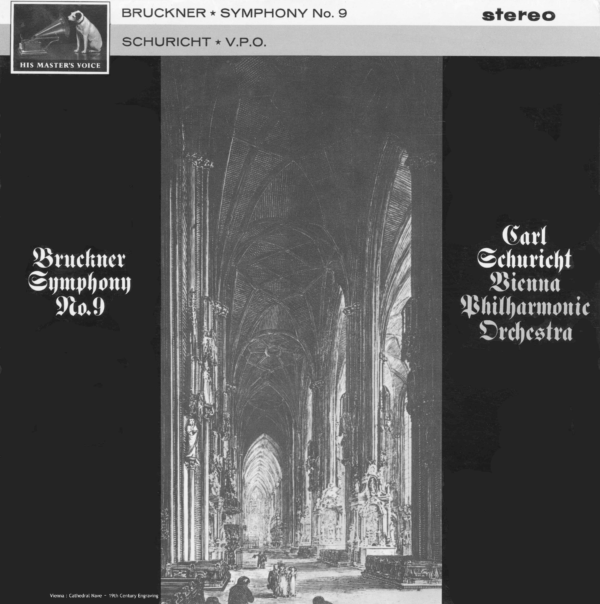 These are legendary records, and always in demand, so I recommend you snap them up while you can. (Forget about ever owning clean originals for less than mega-bucks). This 9th is among my top 3 recordings (along with Giulini and Bernstein on DG), and the 8th is near the top (along with both Karajans on DG, the second live, plus Giulini again on DG, but also Solti on Decca…..).
These are legendary records, and always in demand, so I recommend you snap them up while you can. (Forget about ever owning clean originals for less than mega-bucks). This 9th is among my top 3 recordings (along with Giulini and Bernstein on DG), and the 8th is near the top (along with both Karajans on DG, the second live, plus Giulini again on DG, but also Solti on Decca…..).
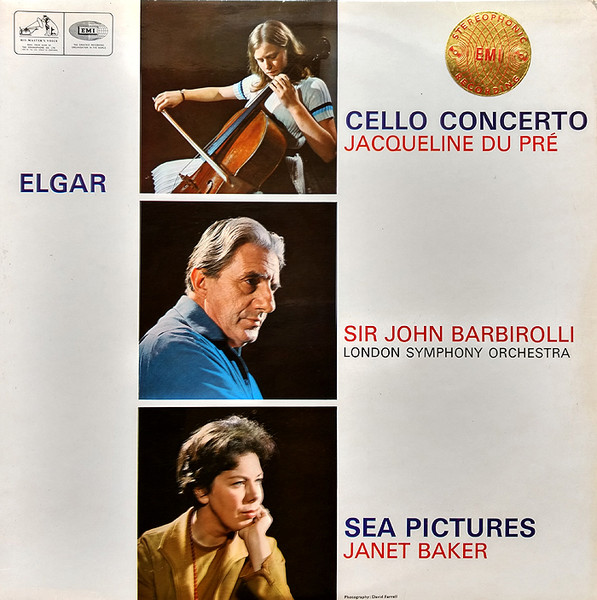 Another essential purchase would be Jacqueline du Pré’s legendary account of the Elgar ‘cello concerto, coupled with the Sea Pictures sung by Janet Baker. I treasure my early pressing, but this reissue is meant to be excellent (i've not heard it), and will be quieter, so it’s a no-brainer.
Another essential purchase would be Jacqueline du Pré’s legendary account of the Elgar ‘cello concerto, coupled with the Sea Pictures sung by Janet Baker. I treasure my early pressing, but this reissue is meant to be excellent (i've not heard it), and will be quieter, so it’s a no-brainer.
Direct-to-Disc from the Bamberg Symphony Orchestra and Emil Berliner Studios
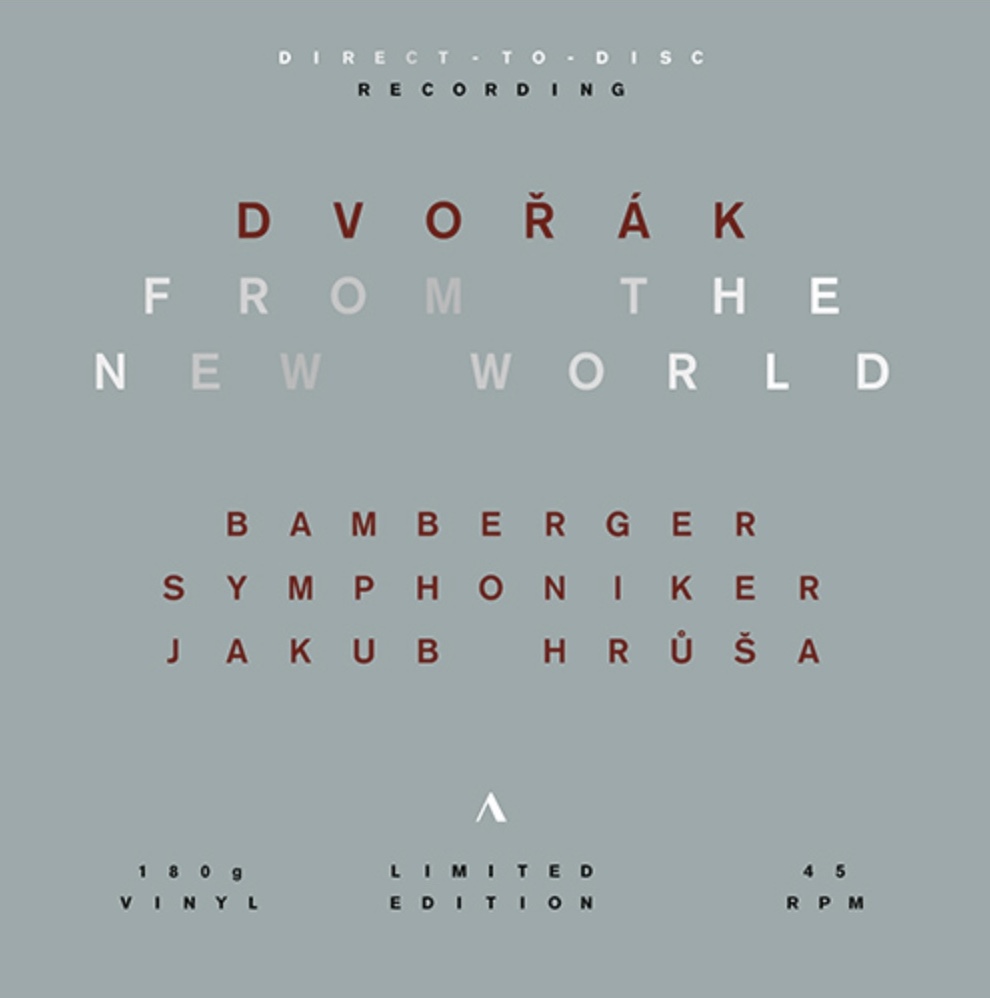
Only last week, MF gave a rave review for the latest collaboration between the Bamberg Symphony and Emil Berliner Studios. This Direct-to-Disc 3LP set follows in the footsteps of their earlier Ma Vlast. My copy is in the mail - if you are interested you need to act quickly. This will sell out. Links to various sites where you can buy it are here.
Yarlung Records Vinyl
This is one of the audiophile labels making matchless new recordings. Incredible attention paid to capturing excellent sound is matched by top-tier performances. Do not imagine that because there are not big name artists on the cover that these performances aren’t anything other than first-rate.
My first pick will be a record you might have missed, a 45rpm cut of varied Renaissance and Baroque music performed on period instruments.
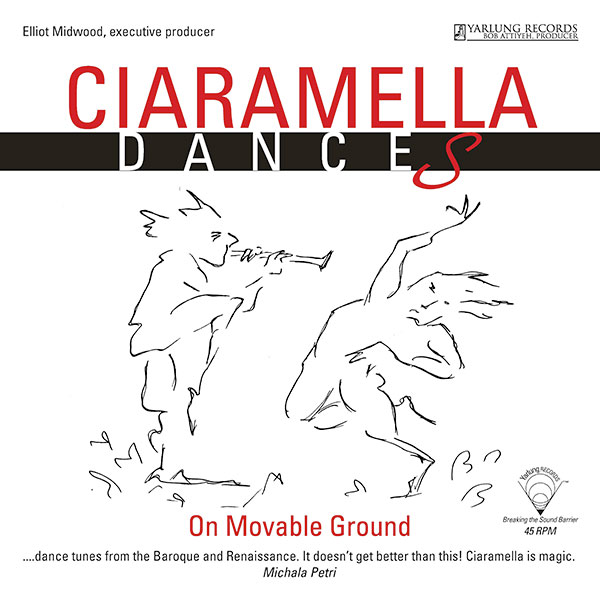 I love this record, and it is rarely far from my turntable. Instruments like these, especially the harpsichord, really benefit from careful recording that brings out their sometimes rough-and-ready character without coarsening their sound.
I love this record, and it is rarely far from my turntable. Instruments like these, especially the harpsichord, really benefit from careful recording that brings out their sometimes rough-and-ready character without coarsening their sound.
On his previous endeavour, MF gave this a rave review: "As much pleasure as the melodic compositions and spirited playing bring, an additional highlight is the superb, minimally miked recording (a single AKG C24 tubed 'stereo' unit), produced to analog recording tape at USC's Alfred Newman Hall. ... The short signal path wired with five foot long custom, stranded silver interconnects, features custom Elliot Midwood-designed vacuum tube preamplifiers and no mixer. The cut from the original tape at 45rpm by Bernie Grundman uses no compression or limiting. ... The sonics are astonishing and the Pallas pressing dead quiet." — Music = 9/11; Sound = 11/11.
‘Nuff said!
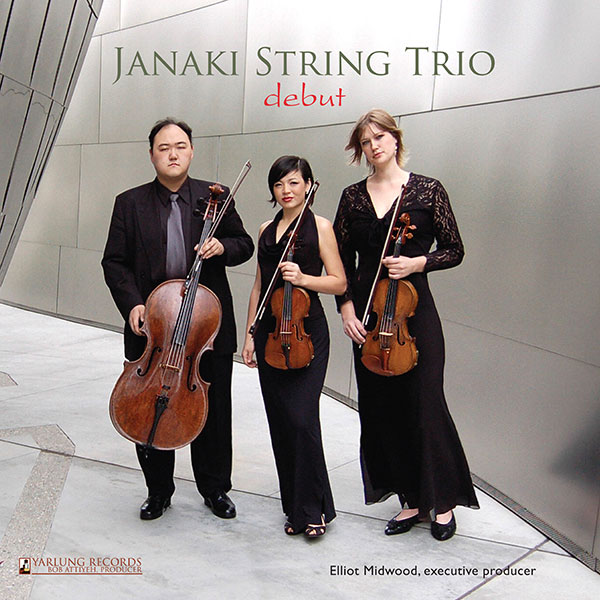 The other record I will mention is this one of modern music by Penderecki and Jason Barabba for string trios, again cut at 45rpm. If you’ve tended to veer away from modern music, this might be a record to win you over. The playing is casually virtuosic, the music challenging but not forbidding. Give it a try!
The other record I will mention is this one of modern music by Penderecki and Jason Barabba for string trios, again cut at 45rpm. If you’ve tended to veer away from modern music, this might be a record to win you over. The playing is casually virtuosic, the music challenging but not forbidding. Give it a try!
Classical Gold (Much of it on Vinyl) from the Berlin Philharmonic Orchestra
Whenever anyone conducts a poll asking which are the greatest orchestras in the world, the Berlin Philharmonic regularly either tops the list or is in the top 5, and deservedly so.
As the traditional classical recording industry began to implode in the 2000s, and major orchestras lost the guarantee of regular (well-paid) recording gigs, several of them decided to set up their own in-house record labels, based around recordings of live concerts, keeping costs to a minimum. One of the first orchestras to do this - very successfully - was the London Symphony Orchestra. In 2014, the Berlin Philharmonic followed the lead of the LSO and other orchestras and established its own label. Unhampered by the challenging acoustics of its home concert hall (as the LSO and LPO have always been), the BPO label immediately put an emphasis on presenting top tier sonics, and luxurious packaging. Releases initially came out on CD and Blu-Ray (using the concert footage captured for the orchestra’s pioneering Digital Concert Hall, established in 2008). Represses in smaller boxes featured dual layer CD/SACDs.
But from the beginning there was a strong commitment to vinyl, and not surprisingly management turned to Emil Berliner Studios (with whom they had worked at DG) to effect the realization of their performances on vinyl.
At this time, Rainer Maillard at EBS was determined to explore the virtues of direct-to-disc recording, so one of the first ventures was to record all four Brahms symphonies direct-to-disc.
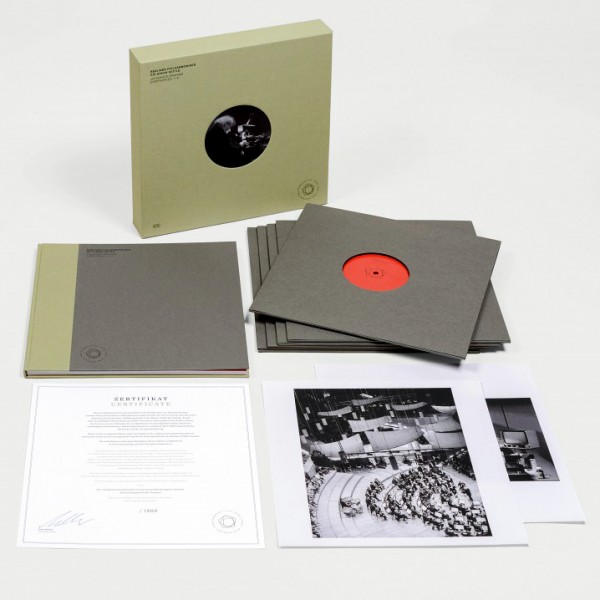 This was quite the challenging, if not risky, enterprise, requiring the orchestra and music director Simon Rattle to perform near perfectly since no edits would be possible. The resulting expensive LP set is now a serious collector’s item, as is the subsequent D2D recording of Bernard Haitink’s final concert with the orchestra, of Bruckner’s mighty 7th Symphony.
This was quite the challenging, if not risky, enterprise, requiring the orchestra and music director Simon Rattle to perform near perfectly since no edits would be possible. The resulting expensive LP set is now a serious collector’s item, as is the subsequent D2D recording of Bernard Haitink’s final concert with the orchestra, of Bruckner’s mighty 7th Symphony.
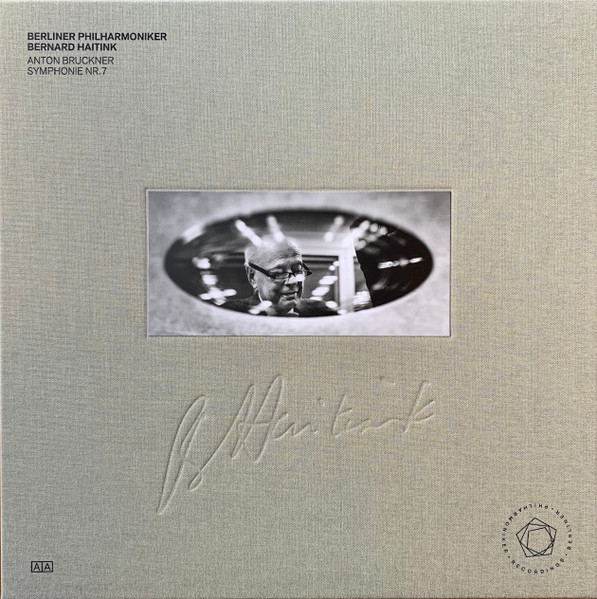 Along the way the BPO has upped its commitment to vinyl, and if you go to the website you are going to find a bunch of the orchestra’s releases still available on vinyl (as well as CD/Blu-Ray and CD/SACD). I am going to highlight two here, both of which I will be reviewing in greater depth in the months ahead.
Along the way the BPO has upped its commitment to vinyl, and if you go to the website you are going to find a bunch of the orchestra’s releases still available on vinyl (as well as CD/Blu-Ray and CD/SACD). I am going to highlight two here, both of which I will be reviewing in greater depth in the months ahead.
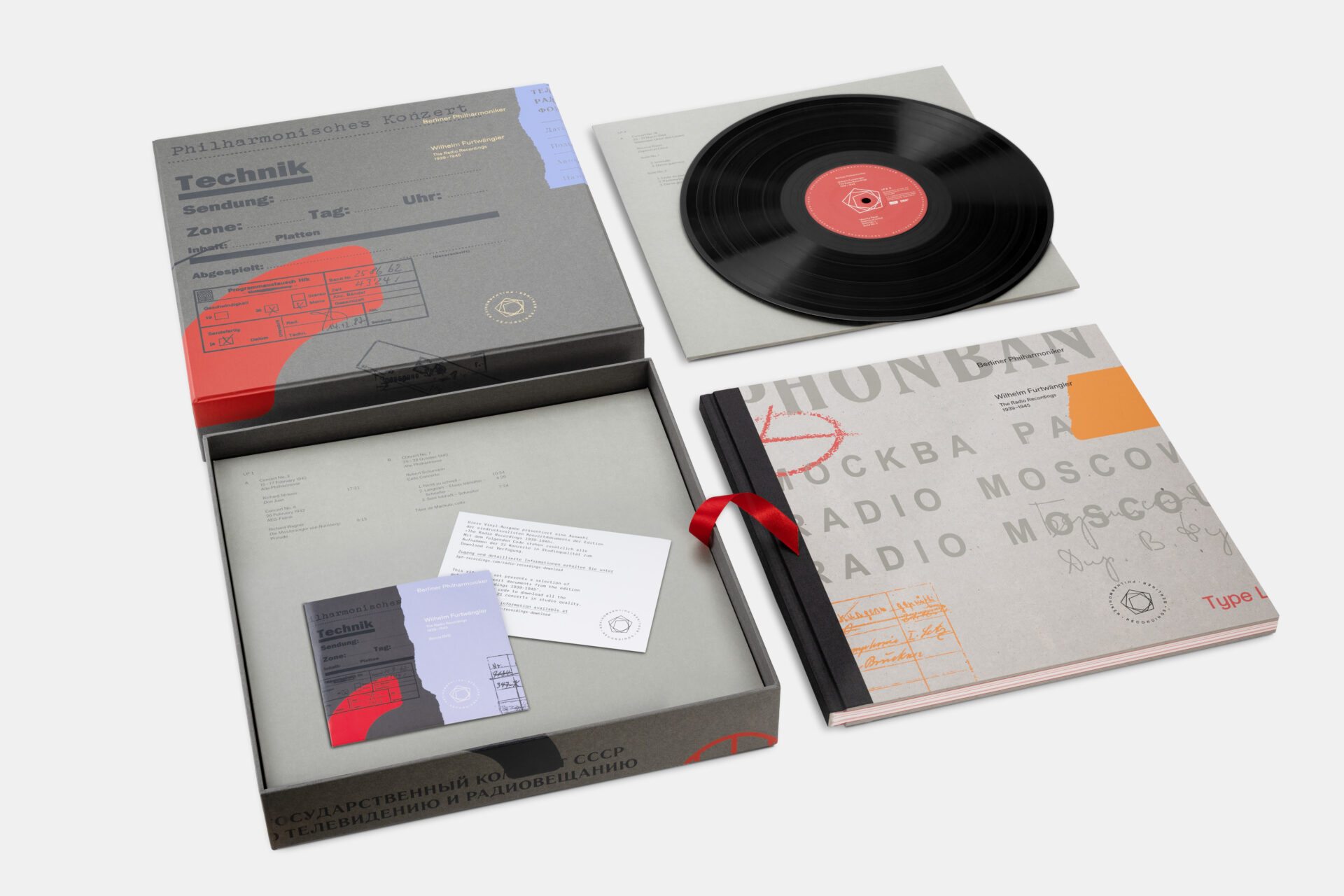
First up, Furtwängler again. Back in 2019 the BPO issued a massive, gorgeously presented and annotated set of his wartime recordings with the orchestra on 22 dual-layer CD/SACDs. The story behind the existence and retrieval of these “lost” tapes is an epic in its own right, too long to go into here. When the pandemic hit I decided the time was right for me to do a deep-dive into the Furtwangler catalogue, and this was one of my jumping off points. I was not disappointed.
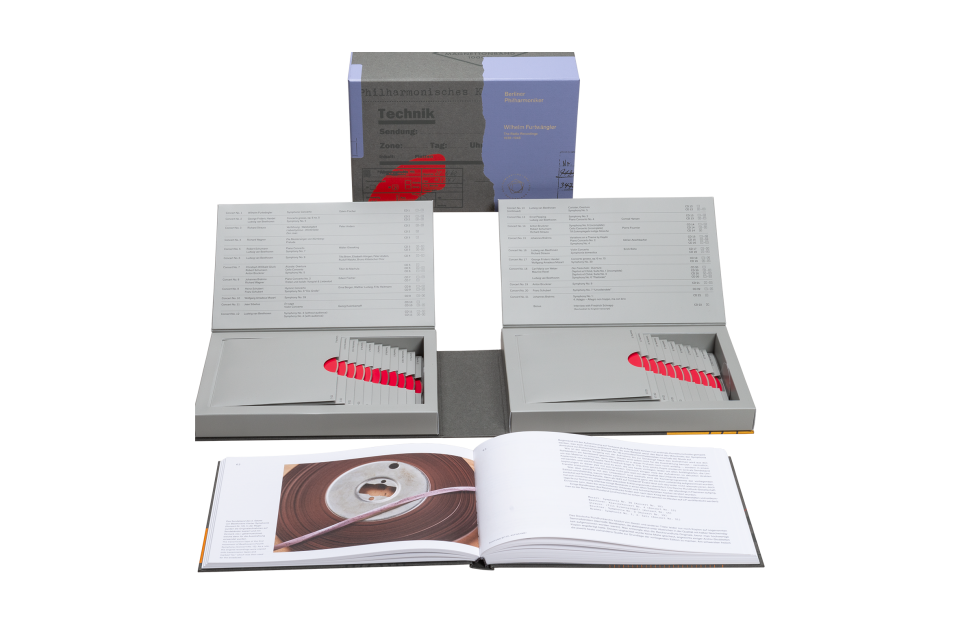 Then, earlier this year, a limited edition vinyl set of this box was released, with a selection of the recordings featured on beautifully pressed vinyl.
Then, earlier this year, a limited edition vinyl set of this box was released, with a selection of the recordings featured on beautifully pressed vinyl.
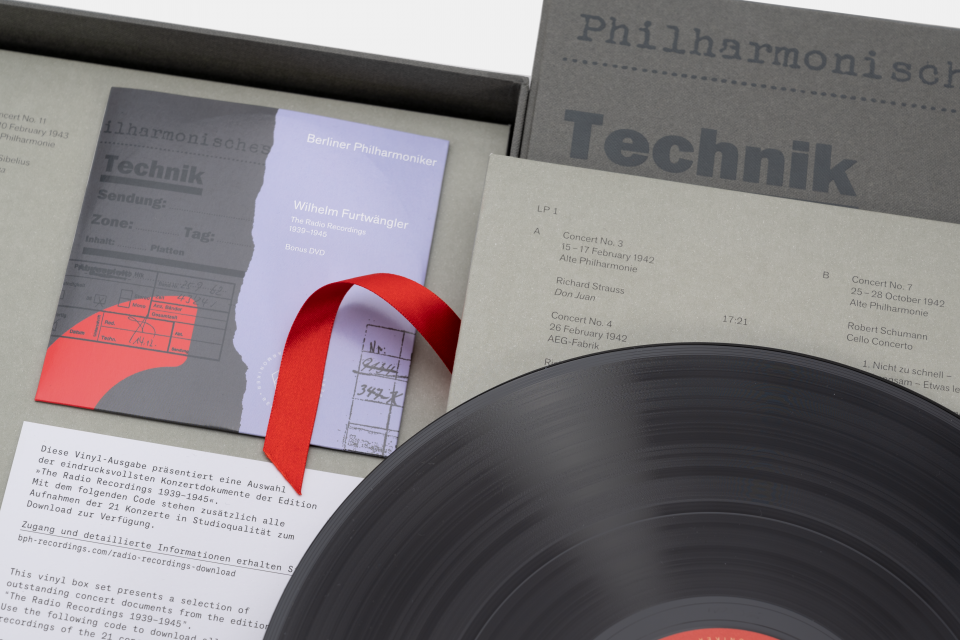 I will be covering this in more detail in the near future, but for the moment I wanted to alert Tracking Angle readers to the existence of this set. Preliminary auditions of the vinyl confirm that if you are a classical vinyl collector, are into Furtwangler, and even if you already have the earlier digital set - you need to get this while it’s still available.
I will be covering this in more detail in the near future, but for the moment I wanted to alert Tracking Angle readers to the existence of this set. Preliminary auditions of the vinyl confirm that if you are a classical vinyl collector, are into Furtwangler, and even if you already have the earlier digital set - you need to get this while it’s still available.
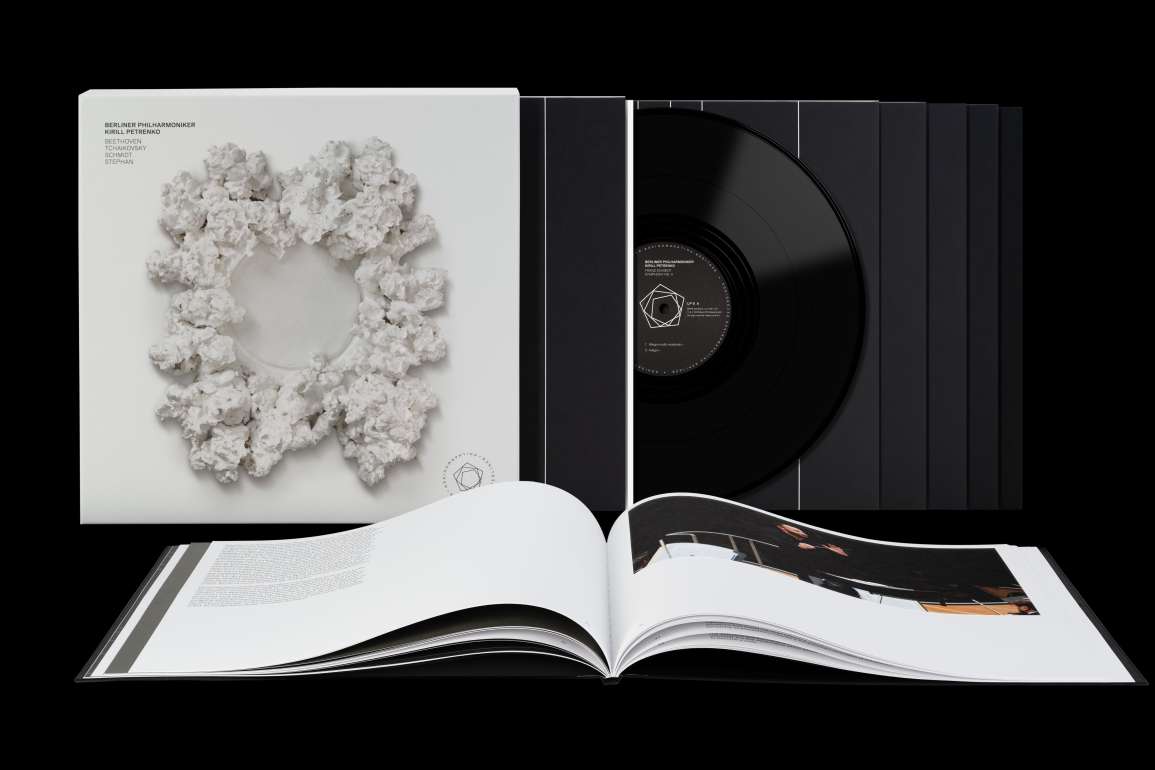 The other vinyl set I have in for review is of the collection of recordings by the orchestra’s new Musical Director, Kirill Petrenko, who has been a huge hit with players and audiences alike. These performances are magnetic, and sound glorious. Yes, the price tag is high, but these editions are gorgeously packaged, with excellent annotation. Self-recommending.
The other vinyl set I have in for review is of the collection of recordings by the orchestra’s new Musical Director, Kirill Petrenko, who has been a huge hit with players and audiences alike. These performances are magnetic, and sound glorious. Yes, the price tag is high, but these editions are gorgeously packaged, with excellent annotation. Self-recommending.
One more thing…. the BPO have announced they are going to do a vinyl version of their magnificent Mahler Symphony cycle which came out in 2021, featuring different conductors in each symphony. I can hardly wait!
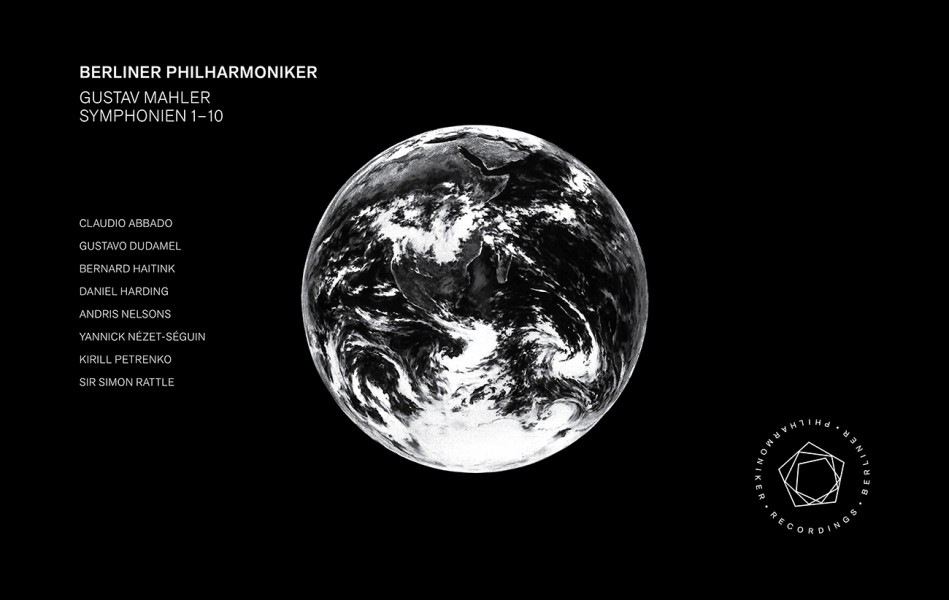 Like I said, the regular CD/Blu Ray and CD/SACD versions of all these sets are no less desirable. A particular favorite of mine is the John Adams set. How I wish this would get the vinyl treatment.
Like I said, the regular CD/Blu Ray and CD/SACD versions of all these sets are no less desirable. A particular favorite of mine is the John Adams set. How I wish this would get the vinyl treatment.
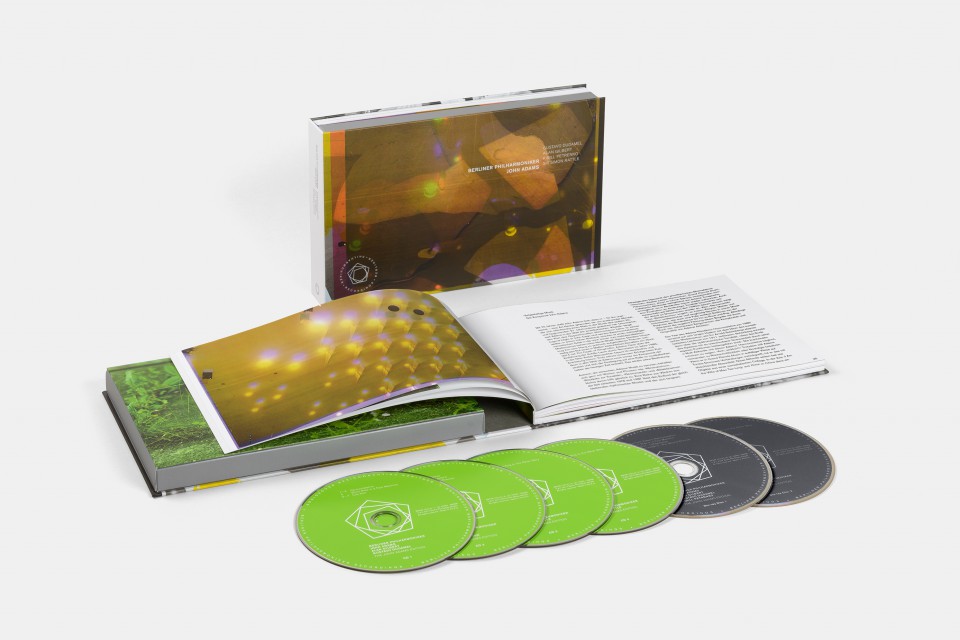
All the sets mentioned above are available to order directly from the Berlin Philharmonic store, as well as showing up on a few other sites like Presto.
For those of you who might be interested, another fantastic gift option for yourself or the classical music lover in your orbit, is an annual subscription to the Digital Concert Hall. This is an absolute treasure-trove of current and past concerts, documentaries and interviews. During the pandemic I had a wonderful time diving into this. The presentation of orchestral music on video here is straightforward but effective, and there is some unusual repertoire to be discovered, let alone incredible performances by the biggest stars in classical music. You will start to feel like you know the members of the orchestra, and there are some real surprises along the way.
Digital Done Right: SACDs To Die For!
If you are an SACD fan, then do check out the Emil Berliner remixed and remastered series of DG titles, many of which are still readily available at Acoustic Sounds and Elusive Disc. N.B. These are all dedicated single layer SACDs, so no CD playback. Be sure to look for the blue stripe on the OBI which designates the disc as an EBS remaster (there are other versions out there). The success of these - which sound massively superior to any previous versions of these recordings - paved the way for the OSS vinyl.
There are many great titles out there. Some particular recommendations would be Karajan's partial Sibelius symphony cycle, and his Beethoven symphony cycle from the 1970s, almost unrecognizable in this improved sound. I also love the Karl Böhm VPO Beethoven cycle, with its unmatched Pastoral Symphony. Kubelik's Dvorak Symphony cycle complete with sonic upgrade now begins to rival Decca's Kertesz classic LSO set. Pollini's iconic set of the Chopin Etudes benefits from massively improved piano sound. Abbado's Mahler 4th Symphony with the Vienna Philharmonic and Frederica von Stade is my desert island version of this work.
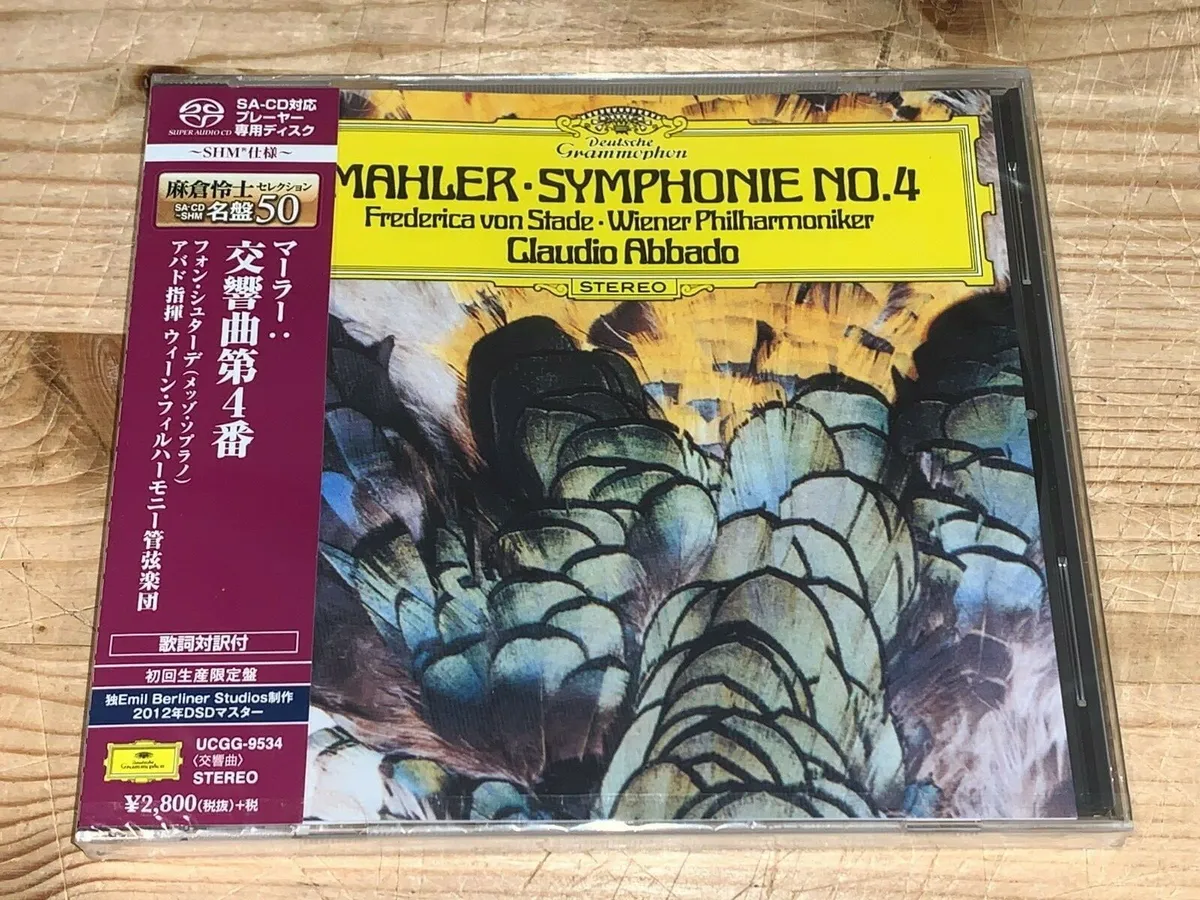
Alas, the amazing set of the Second Viennese School conducted by Karajan you will have to hunt down on ebay, discogs etc. But it’s worth every penny.
I should also mention the ongoing series of Esoteric dual layer CD/SACDs. These consistently breathe new life into later digital recordings, and though expensive, will astonish you with their sonics.
Classical Mega-Boxes Done Right!
While many classical companies, especially the majors, seem to have given up keeping their back catalogues in stock as single releases, they have also decided that the road to the consumer’s wallet is paved with an endless series of mega-boxes gathering together a particular artist or genre in one place.
I am as susceptible to these reissues as the next classical obsessive, and while some of these sets are clearly cash grabs, with little attention paid to revitalizing what can be dodgy CD sound, some are really putting the time and effort in to do their back catalogues proud.
Here are a handful worthy of mention.
Leading the field in terms of gorgeous packaging and state-of-the-art remastering is Sony. In recent years the label has revivified its back catalogue with one essential box after another.
But the real gift to the audiophile here is that these recordings have never sounded better. CBS classical vinyl never sounded great, even on early 6 and 2-eye tube-mastered vinyl. These records never came close sonically to their rivals at Decca and EMI. So what was an audiophile to do?
Well, we hunted down early pressings in the hope that they would get us some way towards the sound on the master tapes, but it was largely a fool’s errand (except that the vinyl still mostly sounded better than any of the CD reissues). A handful of genuinely AAA vinyl reissues on Classic Records back in the day, and more recently Speaker’s Corner, gave a strong indication of just how good the master tapes could sound.
Now, finally, these CD boxes with new remasterings are rewriting CBS’s sonic history. Growing up in England I had to put up with even worse UK pressings (quieter vinyl, but losing a generation or two in the mastering), and I quickly gave up apart from the occasional mandatory Leondard Bernstein purchase. So I simply did not have much familiarity with the catalogue of George Szell, Eugene Ormandy and their ilk.
Well that has all changed in the last few years. I waited, like many others, less than patiently for a repressing of the George Szell/Cleveland Orchestra box that sold out very quickly. Boy was it worth the wait. The majority of these performances can be considered benchmark, and the sound is every bit as vivid as Decca of the same period.
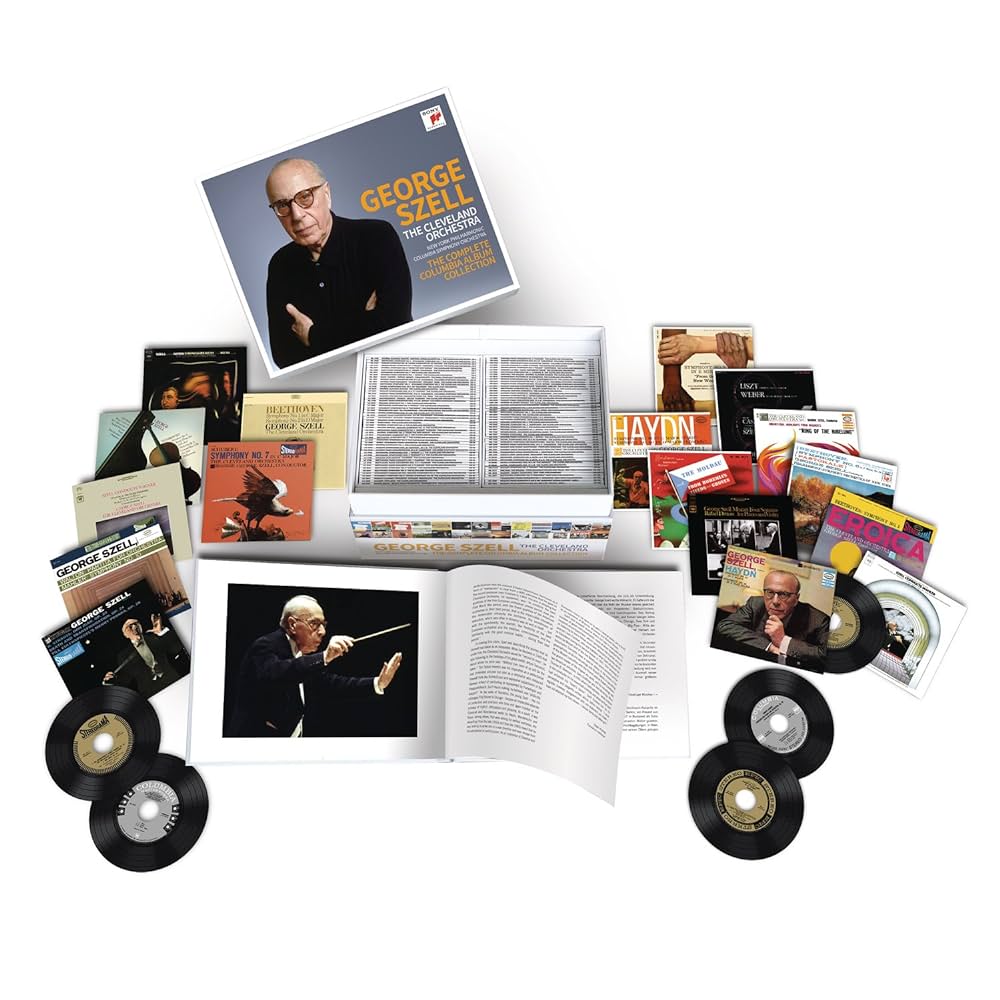
Another revelation was the Eugene Ormandy/Philadelphia Orchestra box of early mono recordings. No allowances need be made for the sound whatsoever, and the performances are thrilling. This is mono at its very best.
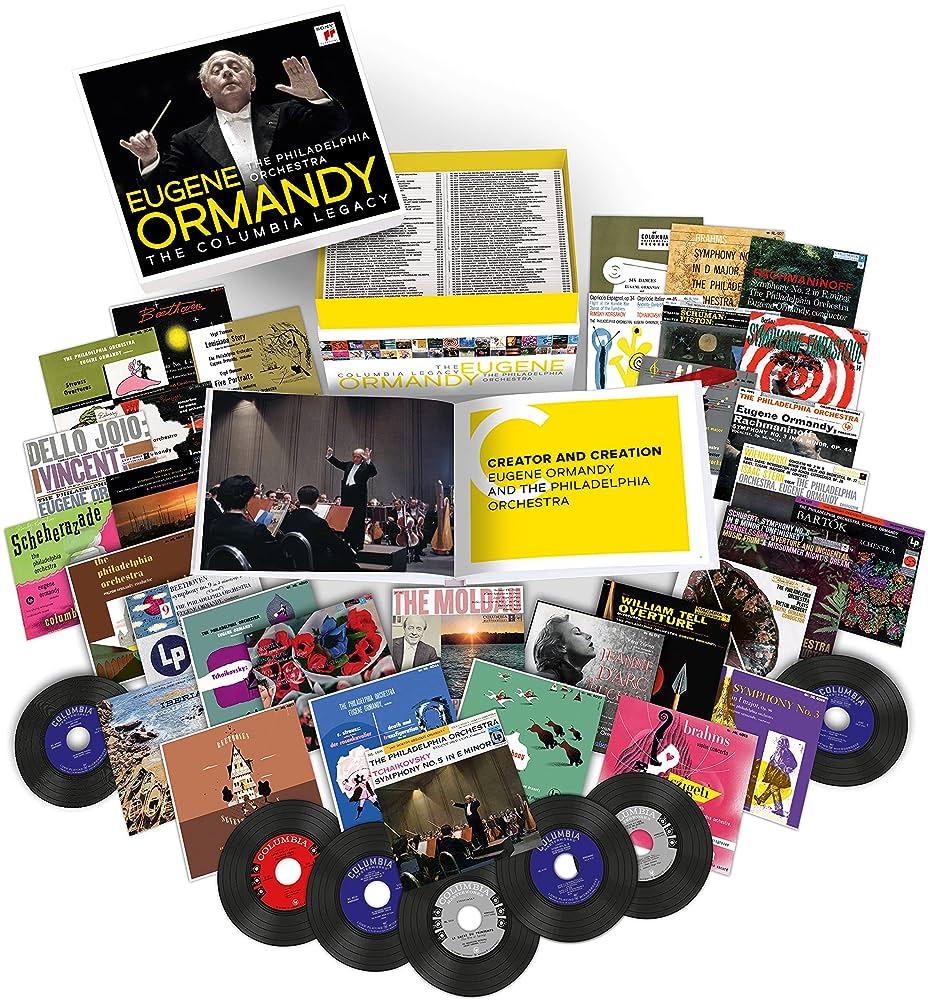
The first of two boxes gathering together Ormandy’s stereo recordings has just been released, and is every bit as desirable, but if you haven’t got the Mono box yet, that should be your priority. It is astonishing.
I haven’t heard it yet, but by all accounts the Robert Craft Sony box is excellent, and it is top of my personal shopping list. Craft worked closely with Stravinsky, and I am fascinated by the combination of his championing of contemporary music and early music in his catalogue.
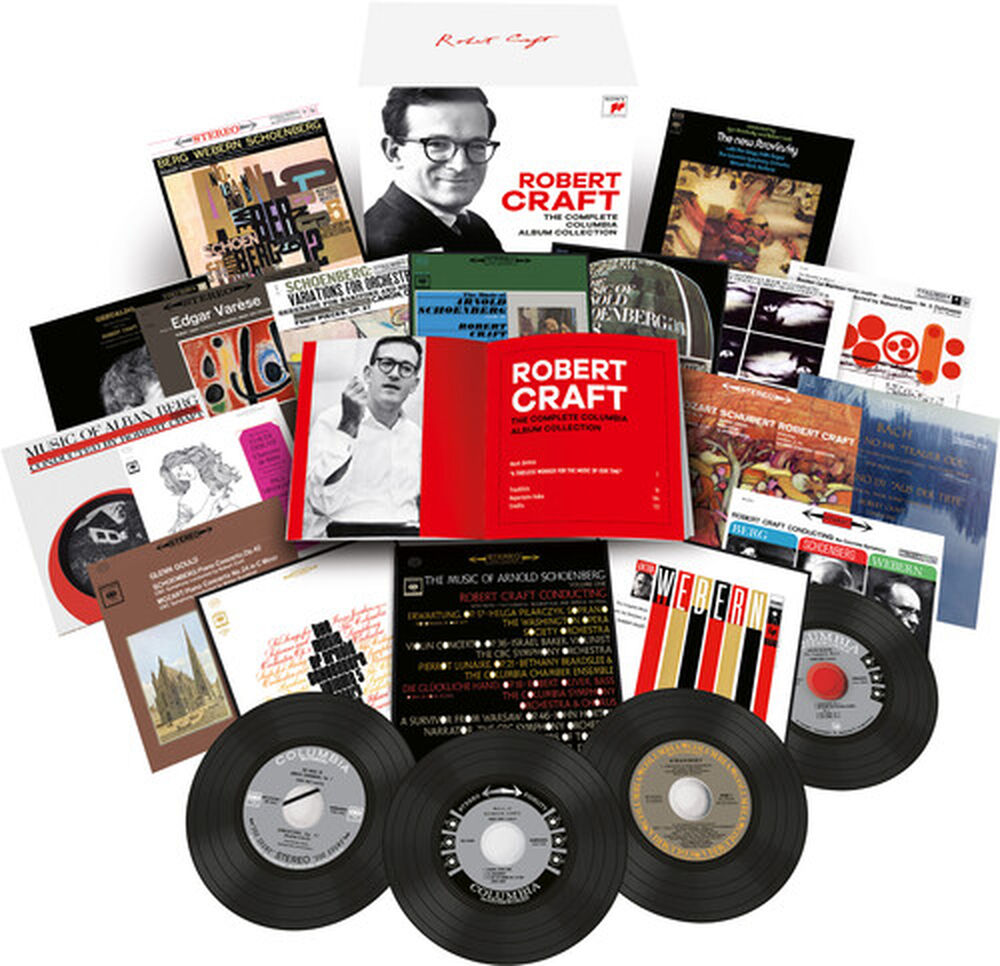
Moving over to Europe, I have been immersed in endless delight as I have worked my way through the Decca box covering Ernest Ansermet’s stereo recordings with his L’Orchestre de la Suisse Romande. As I mentioned earlier, I will be writing a deep dive into his catalogue, highly prized on vinyl by audiophiles the world over.
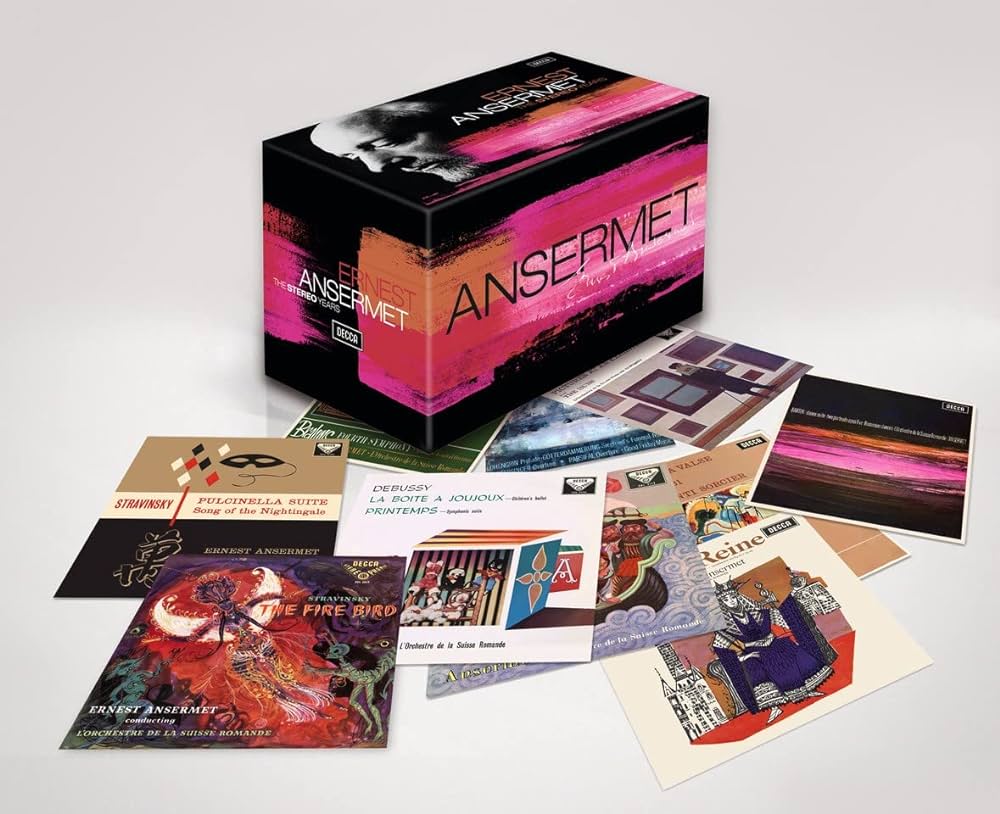
But here’s the thing: this CD set, featuring all new remasters, sounds superb, and frankly it is only when I put on good original vinyl or AAA remasters that I feel I am maybe lacking that extra dose of magic. Yes, the sound on this thing is that good, and it’s a wonderful way to introduce yourself to this unique recorded legacy of much important 20th century music, rarer corners of the French and Russian repertoire, and even the mainstream repertoire. A lot of these records are impossibly hard to find, and very expensive when you do find them. With this set you can listen to everything, and marvel anew at this Aladdin’s Cave of musical goodies. (Just be aware that Decca screwed up a couple of discs in early runs of this box - the Brahms German Requiem and Debussy’s La Mer - but replacement CDs are now readily available).
To the classical music novice I’d say: buy the Szell box for the core Germanic repertoire, Ansermet for all that wonderful French, Russian and other 19th and 20th century music, and you’ve got an entrance pass to the classical catalogue second to none in both performance and sound. Supplement with the Ormandy mono set for extra spice!
By way of complete contrast, Deutsche Grammophon just released one of the most challenging box sets out there, titled “Avant Garde".
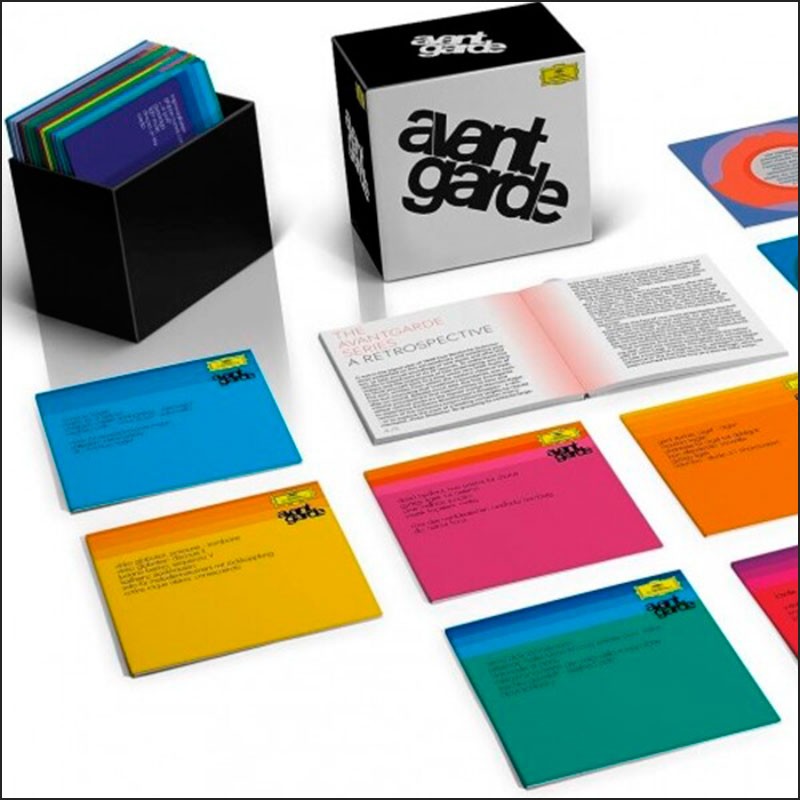 This gathers together the label’s recordings of some of the most iconoclastic, challenging music of the mid-20th century that emerged in the wake of the collapse of tonality and pretty much every other quality associated with classical music for the previous 900 odd years.
This gathers together the label’s recordings of some of the most iconoclastic, challenging music of the mid-20th century that emerged in the wake of the collapse of tonality and pretty much every other quality associated with classical music for the previous 900 odd years.
This is, to say the least, difficult music, and remains so to this day. Many listeners will find themselves questioning whether you can even call it music.
But hats off to DG for finally properly reissuing these recordings in one place, and handsomely recreating the iconic graphic design of the original LPs. I will be reviewing this in greater detail, but I wanted to draw attention to its existence for those of you out there who are feeling adventurous. These recordings will challenge, reward, and turn off listeners in equal measure, but this music is an essential stepping stone towards understanding today’s currents in not just classical music, but all music.
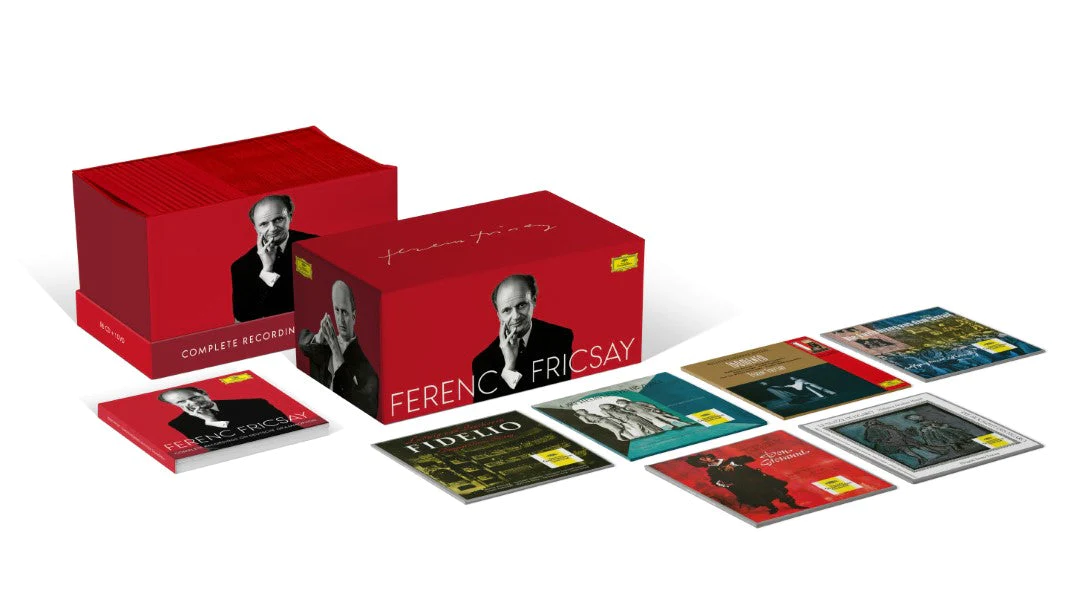
Staying with DG - a set that has just been reissued: The Complete Recordings on Deutsche Grammophon of Ferenc Fricsay. This masterful conductor died at a very early age, and many's the music lover or critic who has speculated how different the history of the recording industry in the second half of the 20th century might have been had he lived. He was in line to take over the Berlin Philharmonic Orchestra, but because he died in 1963 (at the age of 48), that position fell to Herbert von Karajan who, for better or worse, exerted a massive influence over the course of classical music performance and recording during his lifetime. Fricsay is a marvelous conductor and musician, and in particular his recordings of fellow countrymen Béla Bartók and Zoltán Kodály are essential library picks. I own this set in its earlier incarnation as two separate boxes. I believe the remasterings and accompanying documentation in the new box are identical to that release. They are excellent. One disc I will mention that was a complete surprise to me is a selection of music by Johann Strauss I and II.
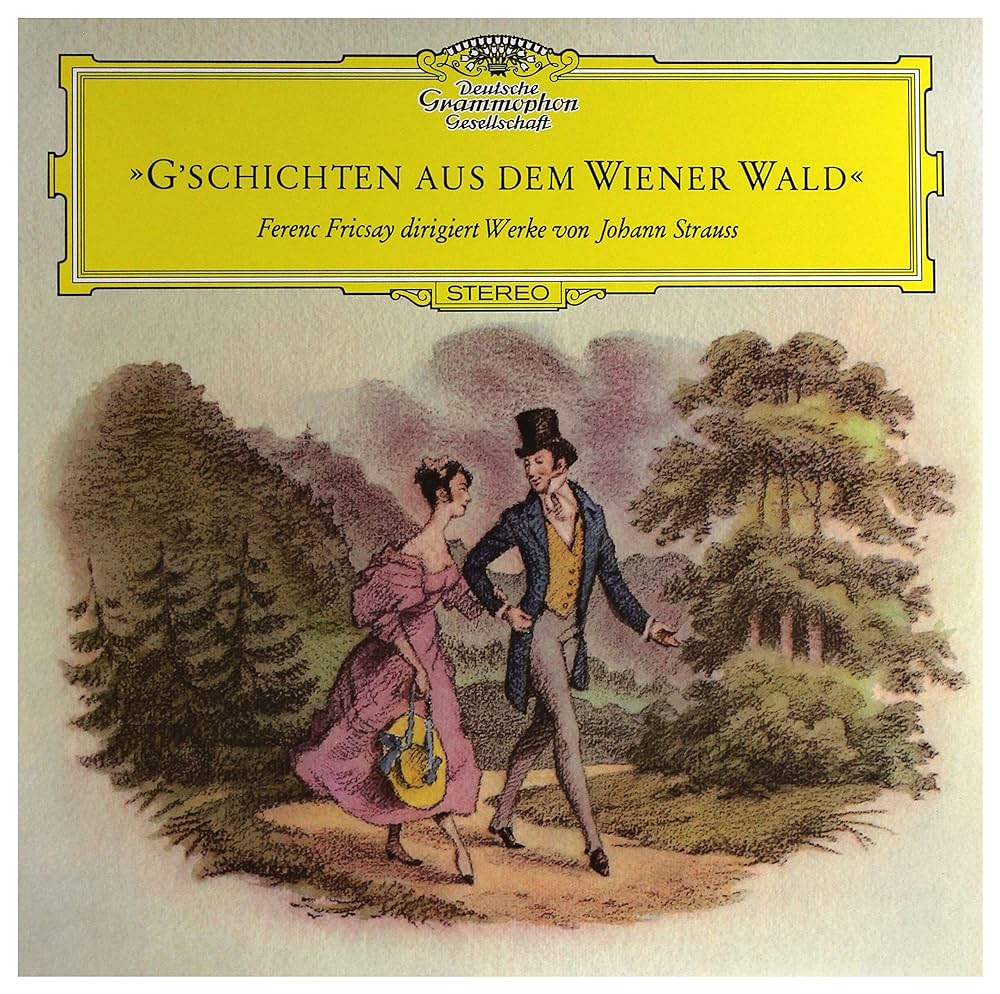
This rivals the Vienna Philharmonic's many famed recordings on Decca for the authentic Viennese style of performance, beautifully recorded. Incidentally, Speaker's Corner has issued several essential Fricsay recordings on vinyl: the three Bartók piano concertos with Geza Anda, and Tchaikovsky's 6th Symphony, all worth seeking out, as are any original large tulip pressings of Fricsay's DG catalogue.
I will wrap this up with a nod to the company that still sets the gold standard for the intelligent boxing-up of the classical industry’s illustrious past, and that is Australian Eloquence, which concentrates mainly on labels within the UMG family of labels. Eloquence has had another banner year. I have been slowly making my way through the two boxes of Antal Dorati’s Mercury recordings.
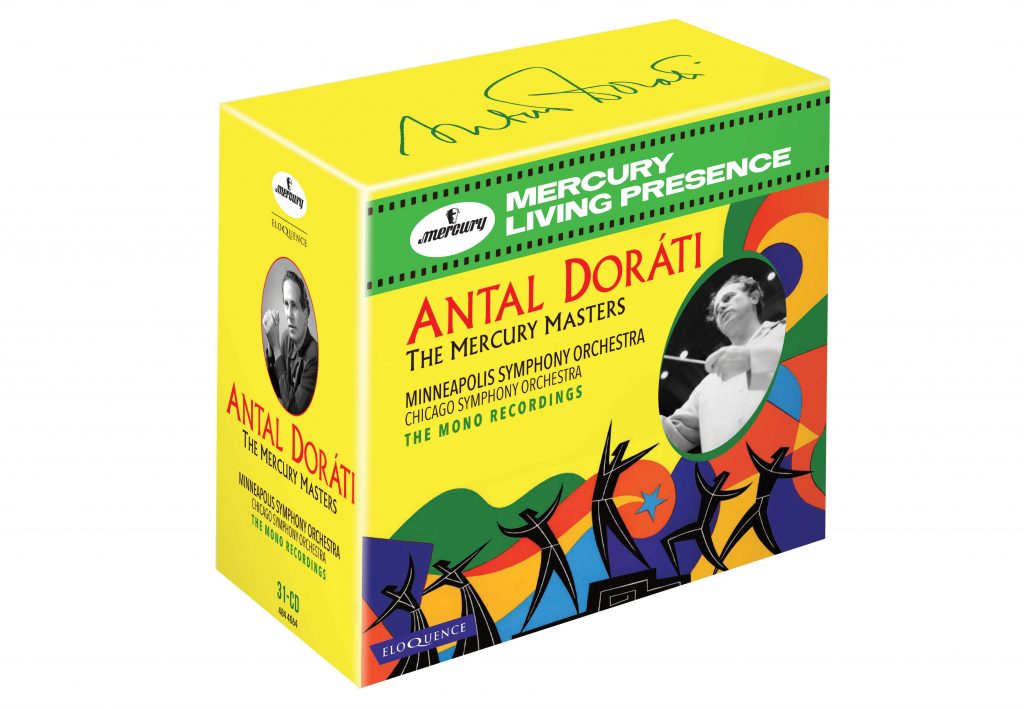
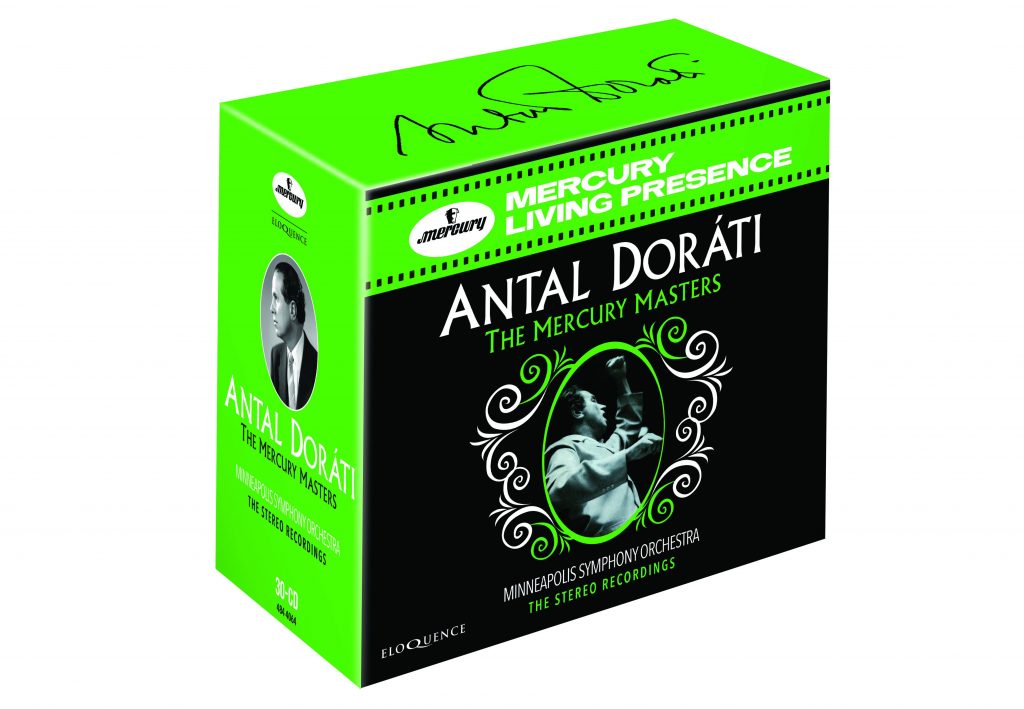 These make excellent companions to the earlier release of Dorati's Haydn and Mozart recordings, which is a revelation, with performances of the Haydn works that are in many ways much fresher than his later Argo cycle of the complete symphonies.
These make excellent companions to the earlier release of Dorati's Haydn and Mozart recordings, which is a revelation, with performances of the Haydn works that are in many ways much fresher than his later Argo cycle of the complete symphonies.
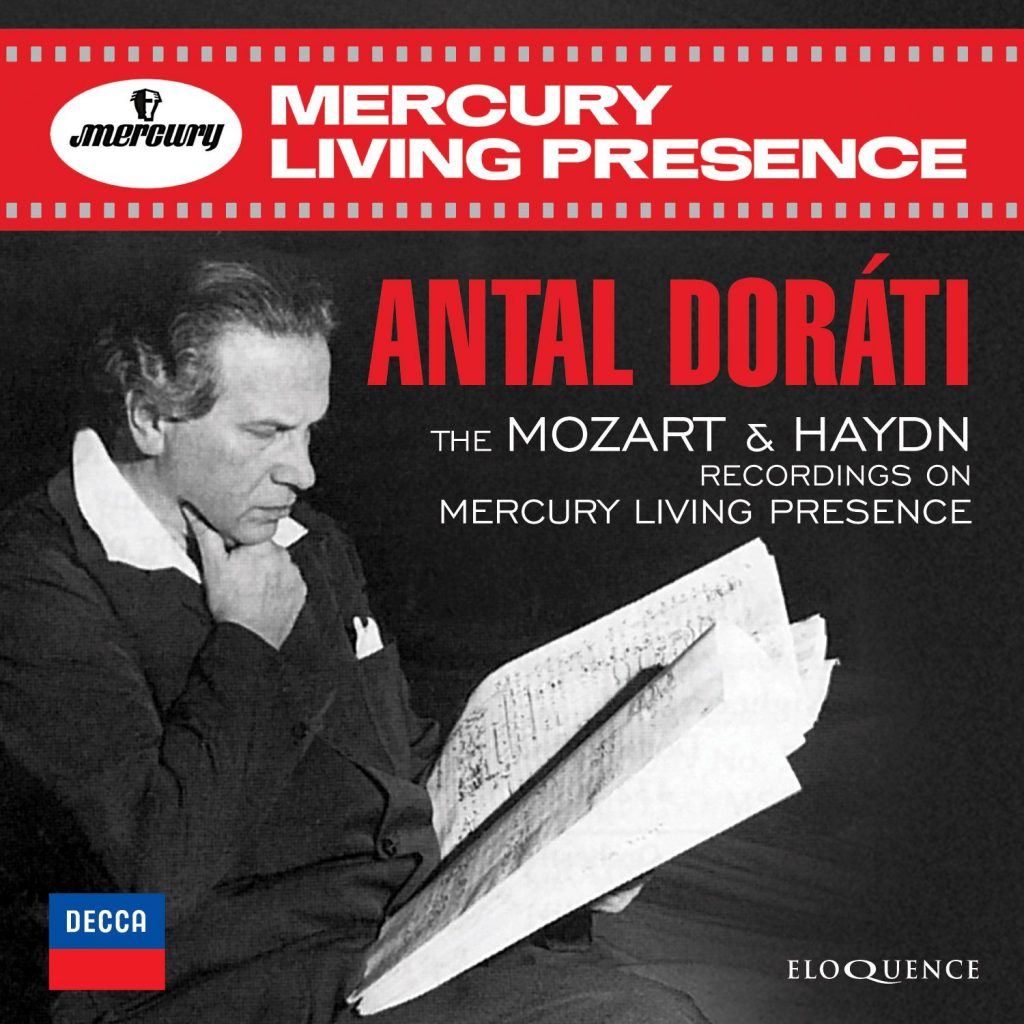 Likewise the two boxes of Paul Paray’s Mercury recordings have been endlessly refreshing and revelatory. Paray approached the standard (and not so standard) repertoire with an appealing directness and generally swifter speeds, and a gift for illuminating orchestral textures (aided by that vivid Mercury engineering) that made the old warhorses shine like new. Remasterings on all of these are very good, occasionally a little bright. Vinyl reissues of select titles on Classic Records and Speaker's Corner are worth hunting down. Clean originals can be hard to find.
Likewise the two boxes of Paul Paray’s Mercury recordings have been endlessly refreshing and revelatory. Paray approached the standard (and not so standard) repertoire with an appealing directness and generally swifter speeds, and a gift for illuminating orchestral textures (aided by that vivid Mercury engineering) that made the old warhorses shine like new. Remasterings on all of these are very good, occasionally a little bright. Vinyl reissues of select titles on Classic Records and Speaker's Corner are worth hunting down. Clean originals can be hard to find.
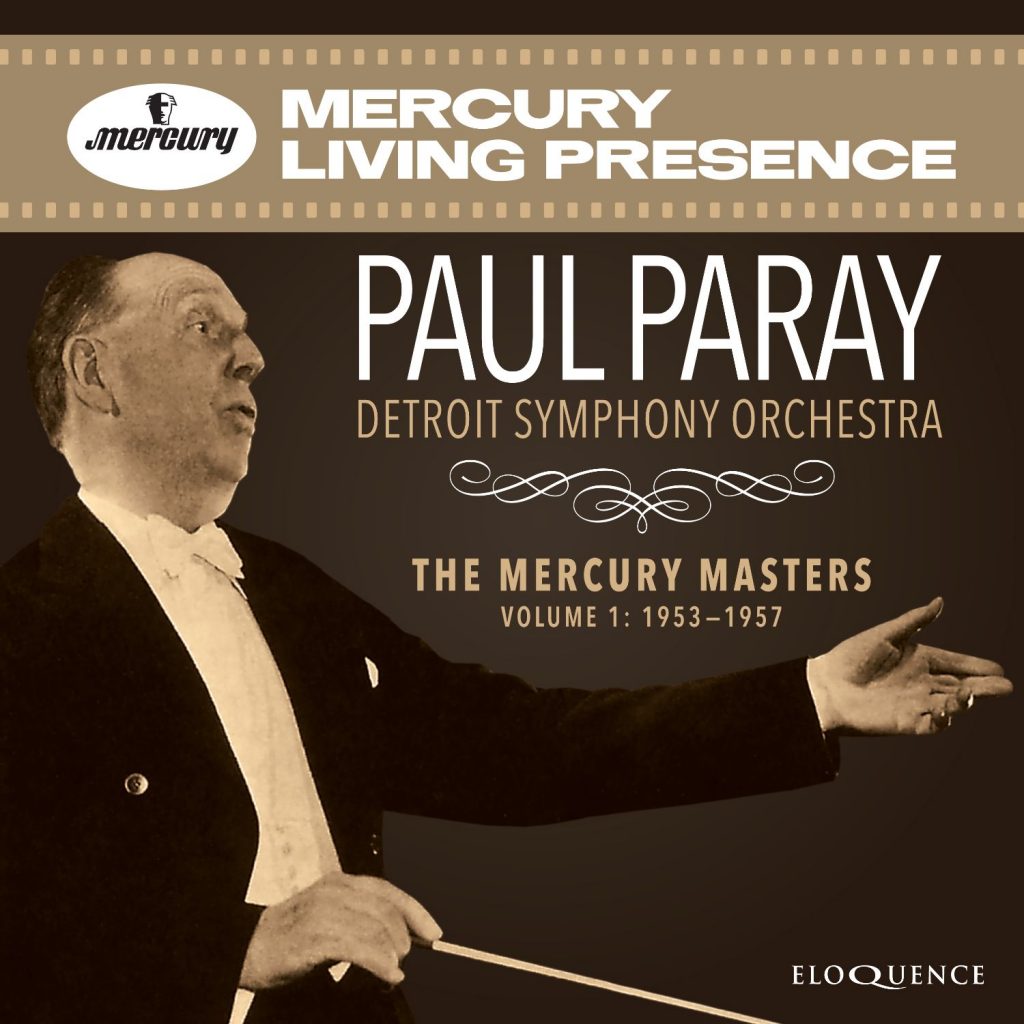
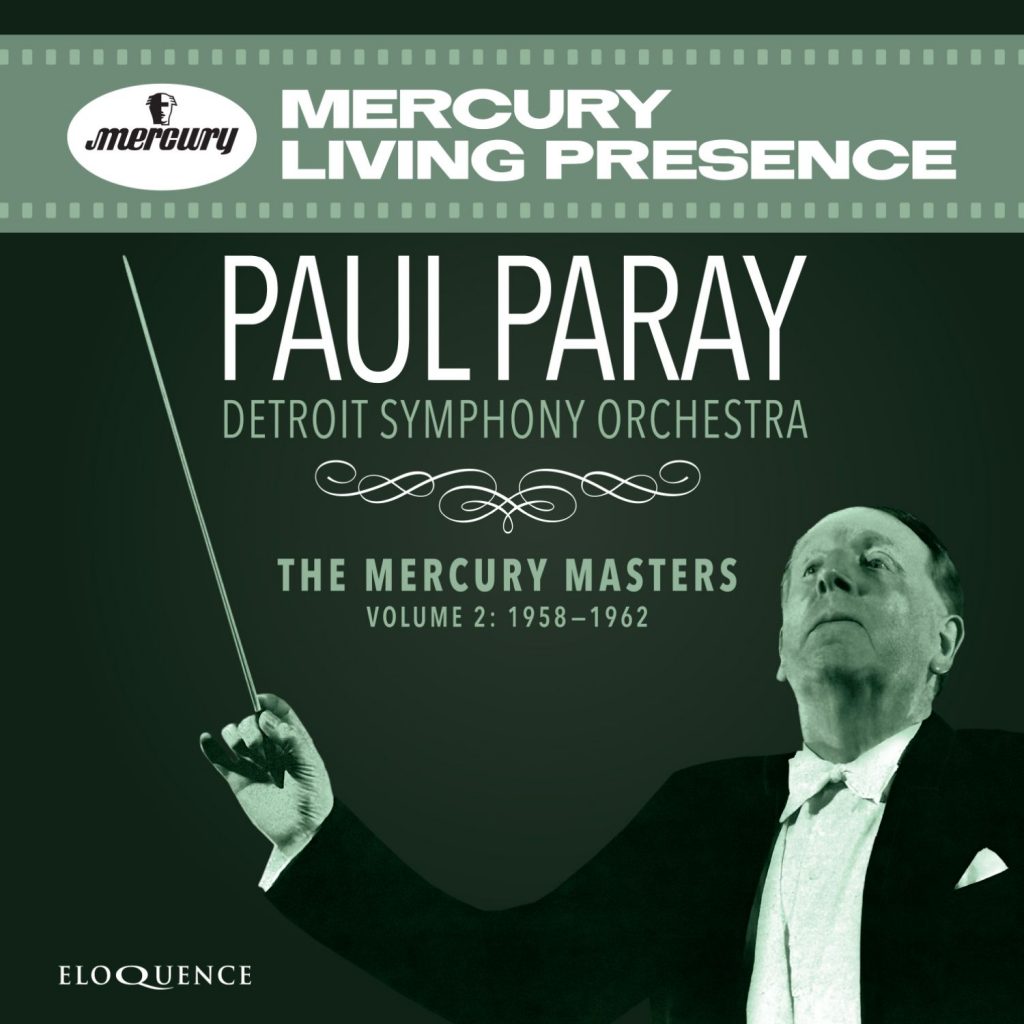
As I listened to all these Mercury sets, I did ruefully reflect upon the fact that of all the acknowledged great audiophile labels from the dawn of the stereo era, Mercury Living Presence has had the least attention from the reissue labels. Classic Records gave us exemplary AAA pressings of several essential titles, as did Speaker’s Corner. Analogue Productions has given us the Janos Starker Bach ‘cello suites on luxury 45rpm pressings, plus his classic account of the Dvorak ‘cello concerto, but there is so much more in the catalogue. Several EBS remastered vinyl box sets trickled out a few years ago, featuring rarer titles, but I’ve not heard them, and I know they were mastered from digital (not that that necessarily disqualifies them as desirable reissues).
This is my biggest wish for the future, that someone will give us more from the Mercury catalogue on genuine, AAA mastered vinyl.
In Conclusion.....
While I am endlessly grateful for all the amazing new classical records (and CDs and SACDs) we are getting, increasingly remastered with love and care, it is still a drop in the ocean compared to what jazz and rock lovers are seeing in the record racks these days. Yes, I know classical is a small market, and the economics of doing a quality vinyl reissue campaign of classical titles are challenging, but then I look at the overwhelming and ongoing success of the DG Original Source Series and I think: it can be done. You just have to do it right from the get-go: respect both the intention and the achievement of the music, the musicians, and the recording team; respect listeners’ ability to hear the difference between good and best (and recognize their willingness to pay more to get the best); and finally make smart choices in the manufacturing and marketing of your product - don’t cut corners.
Those companies doing all of the above may be surprised to discover that Christmas can come early this year, next year, and every year thereafter.










































